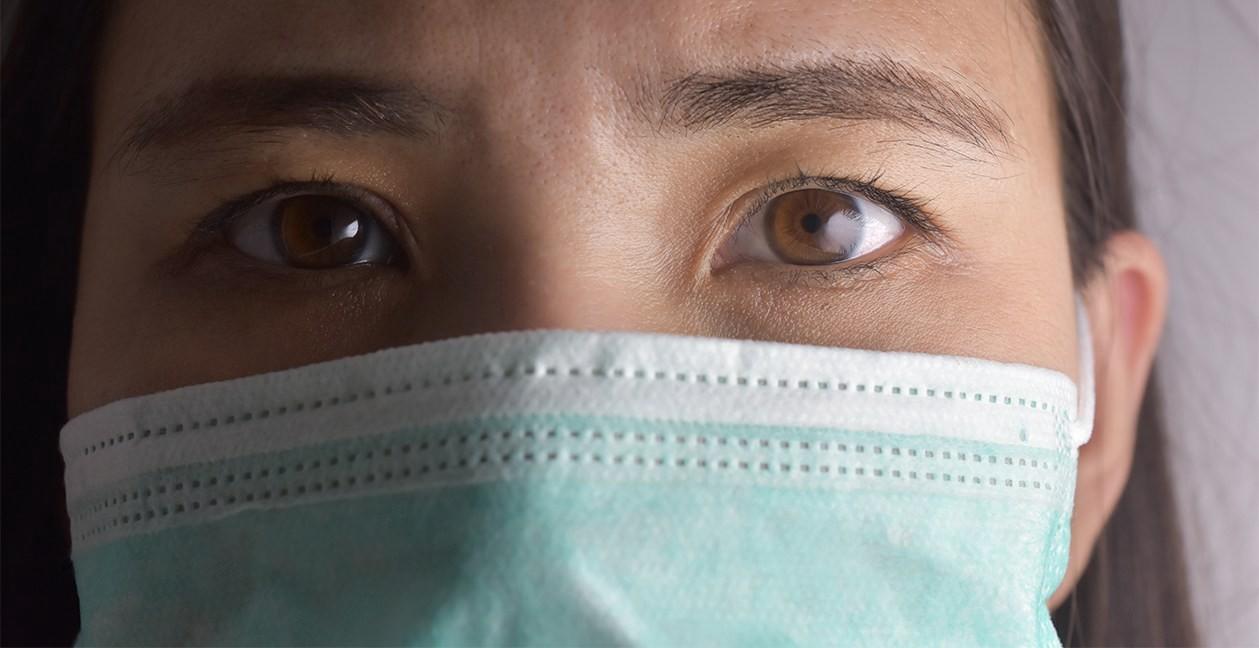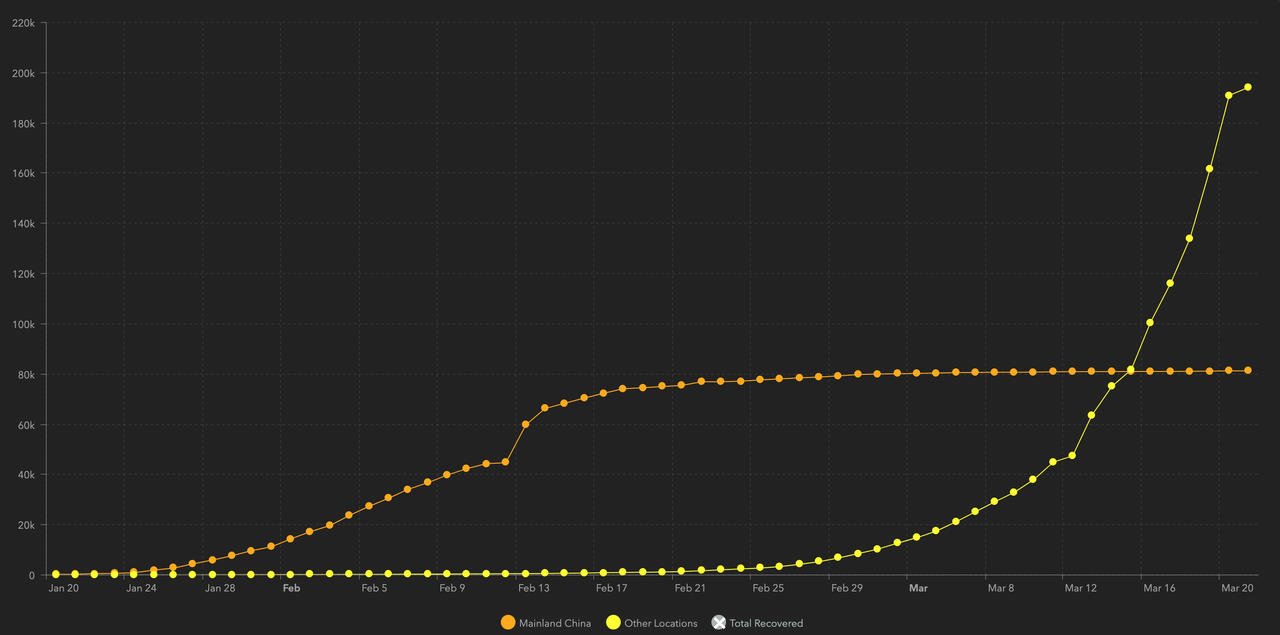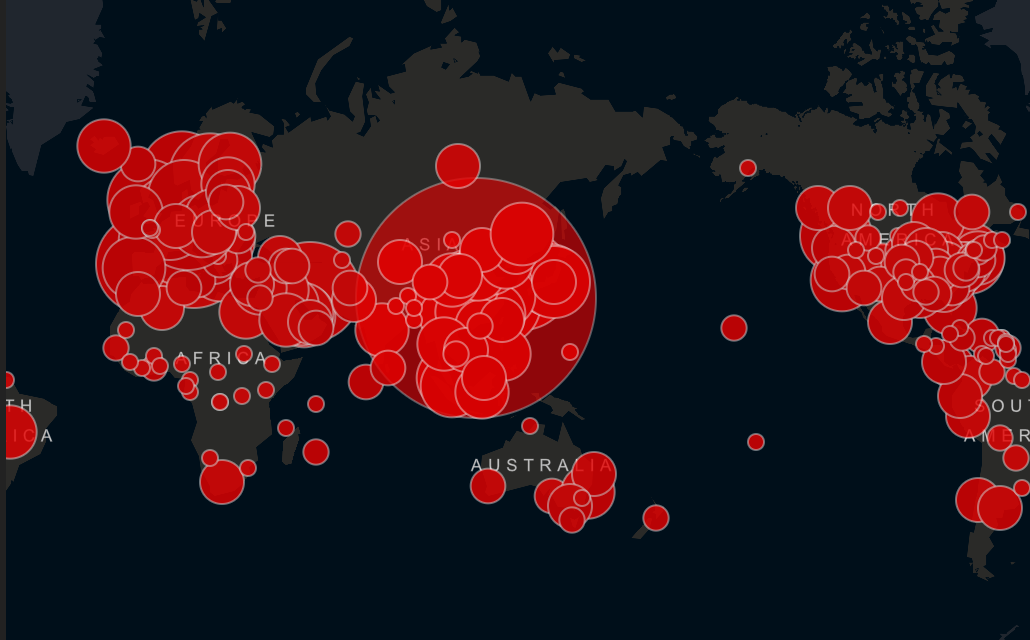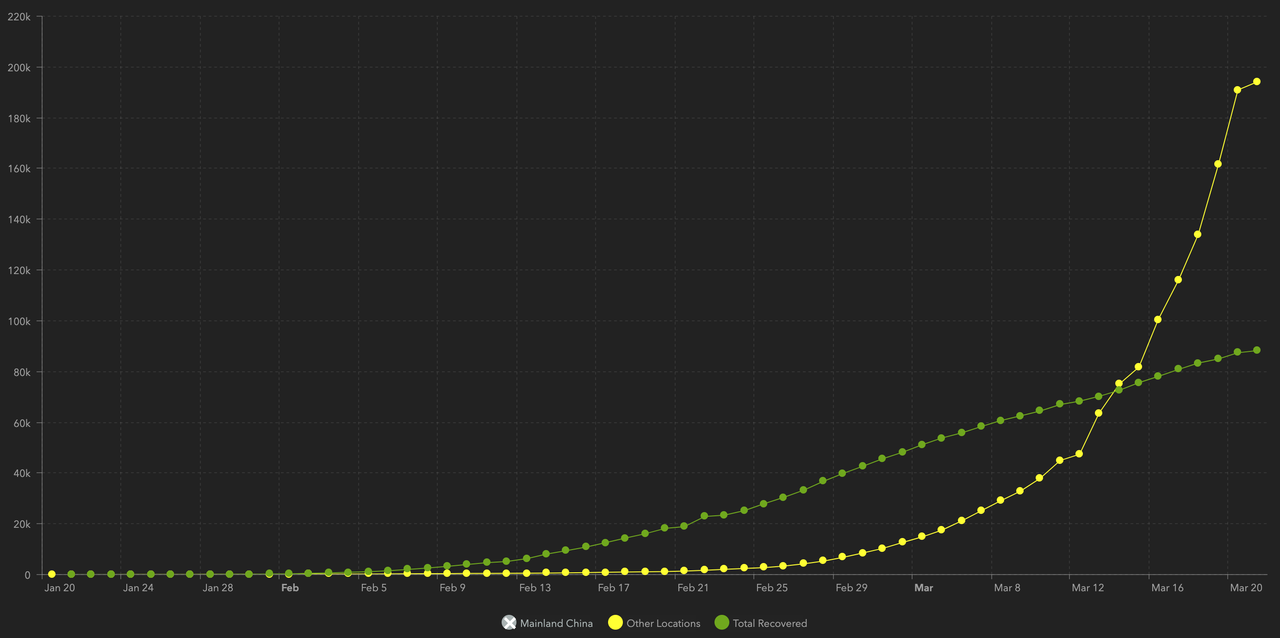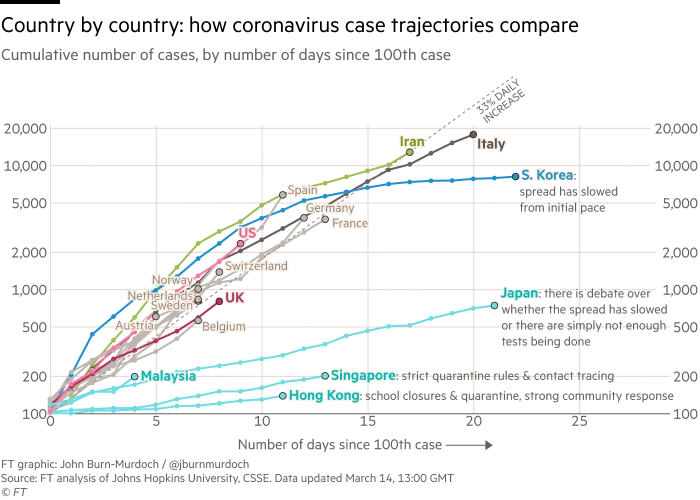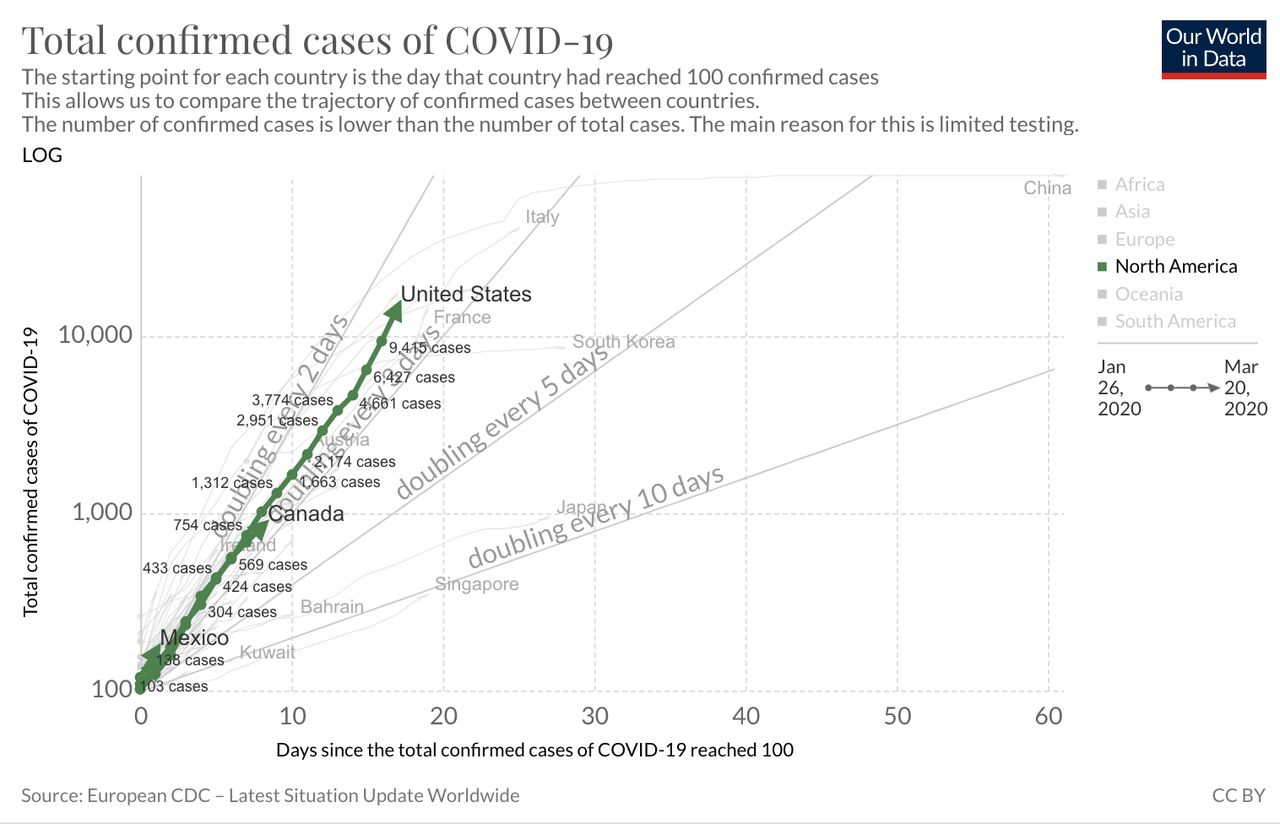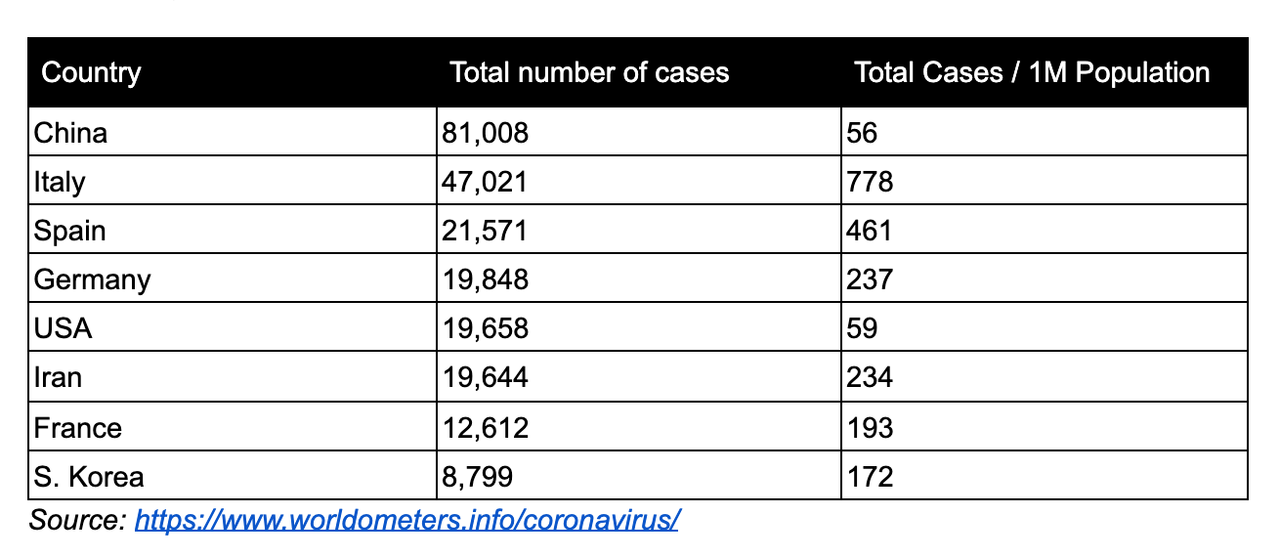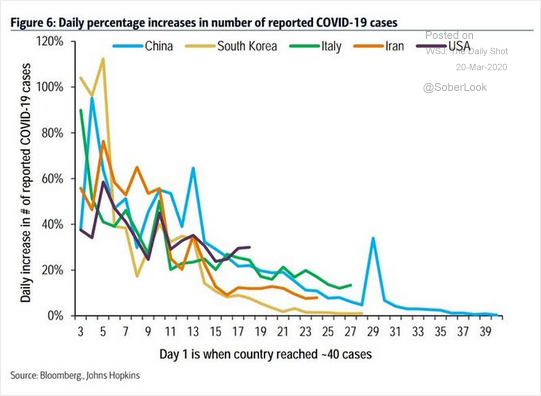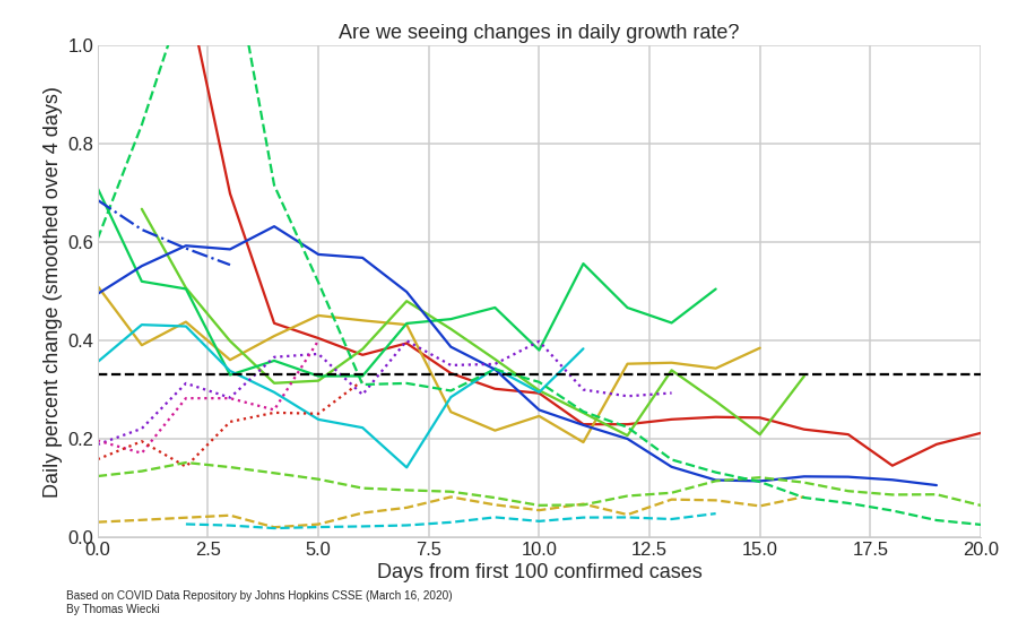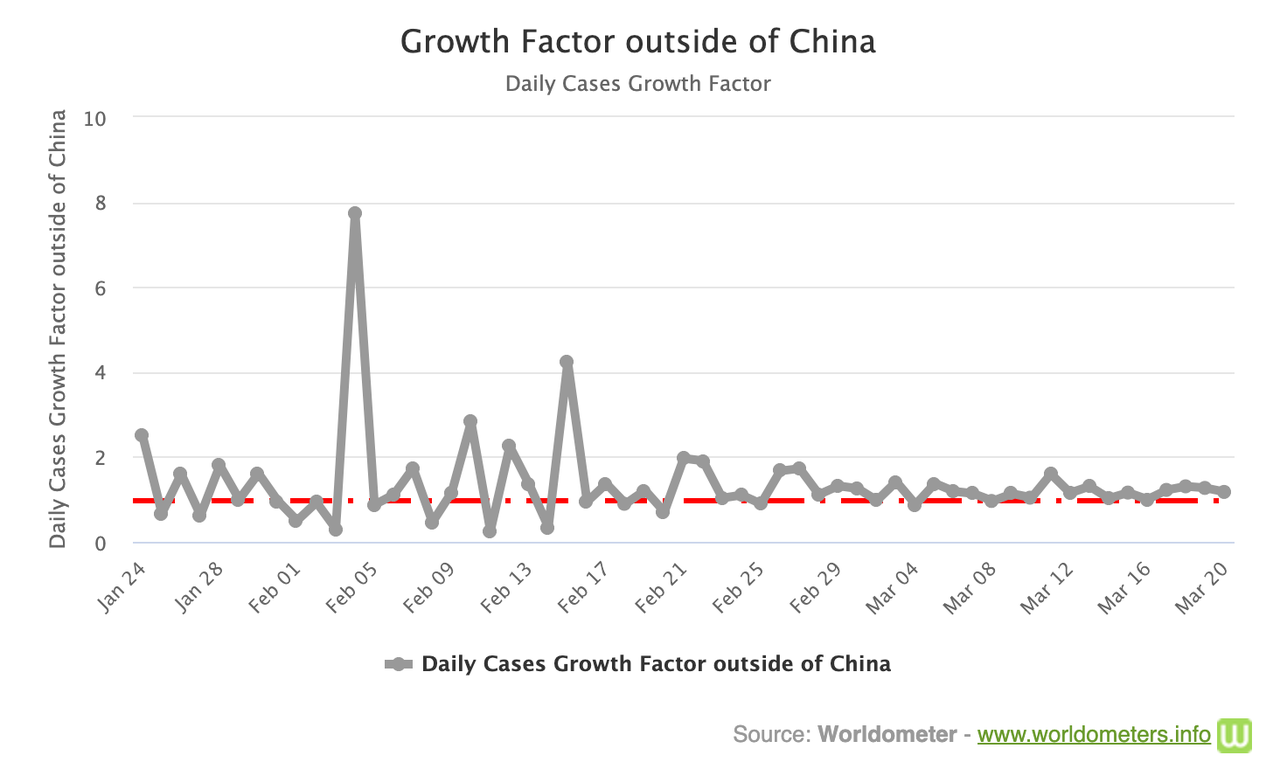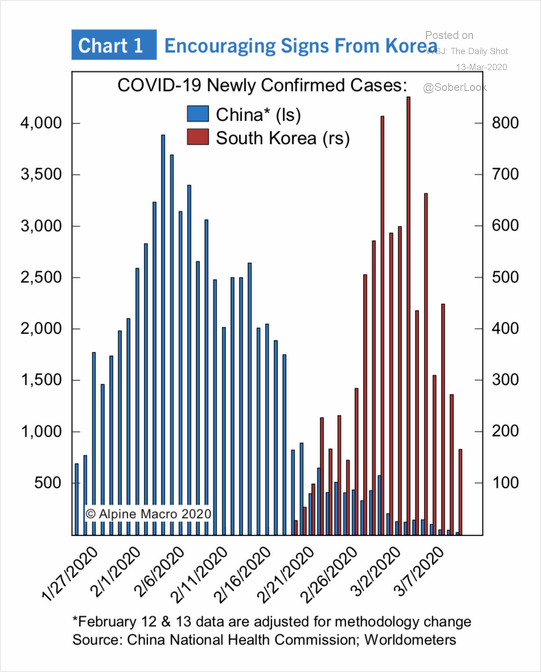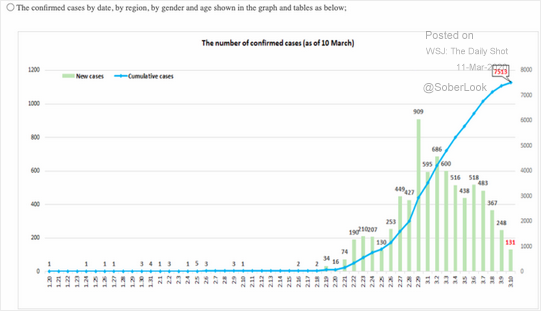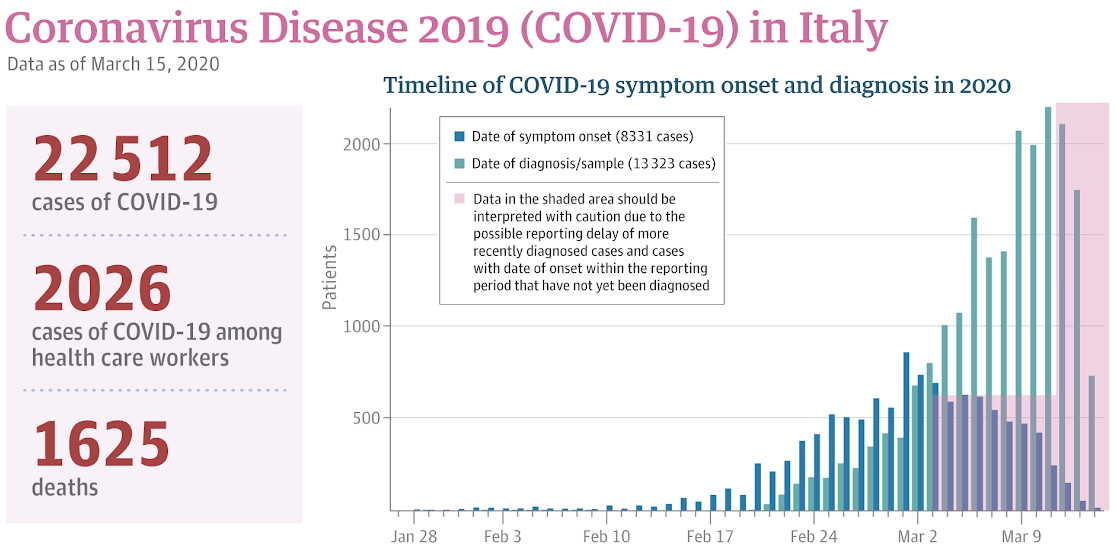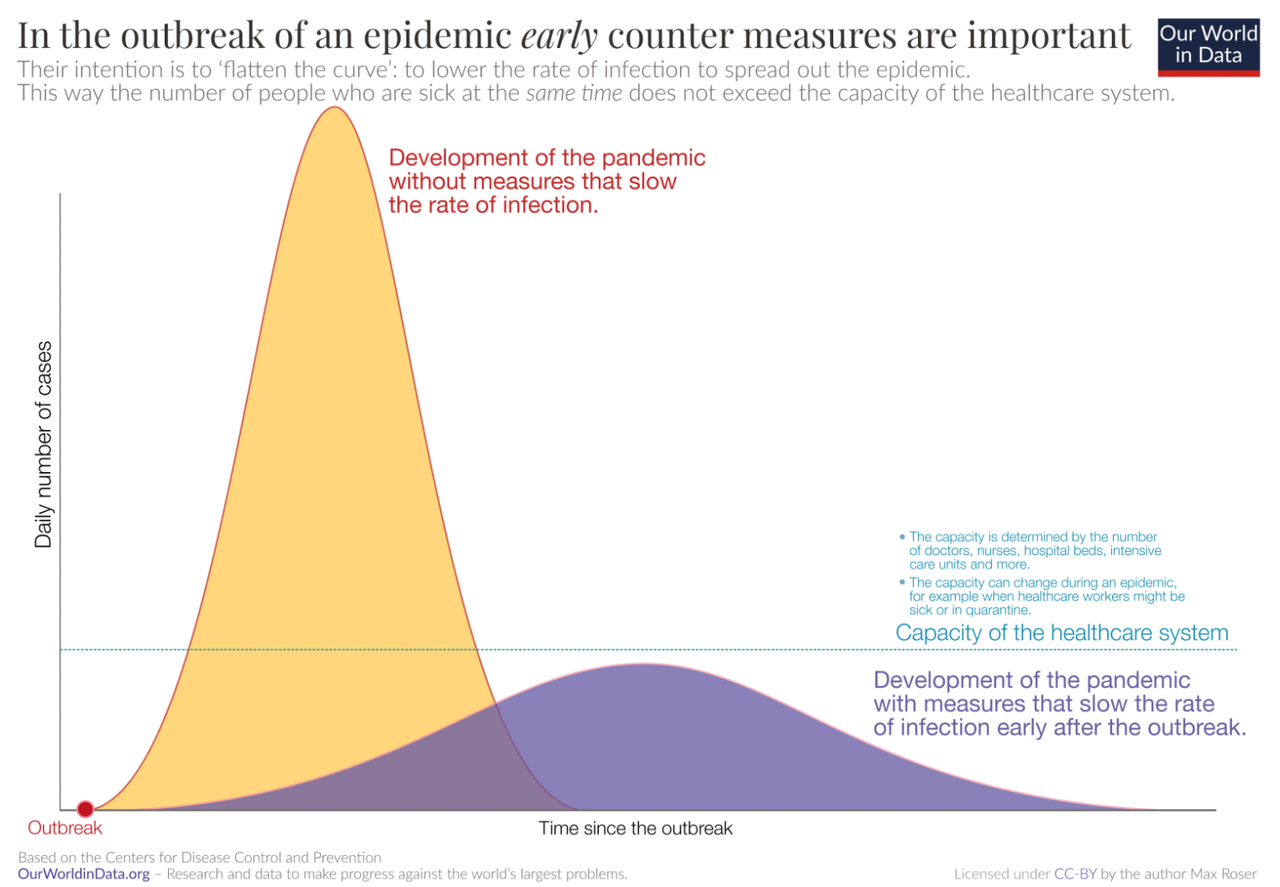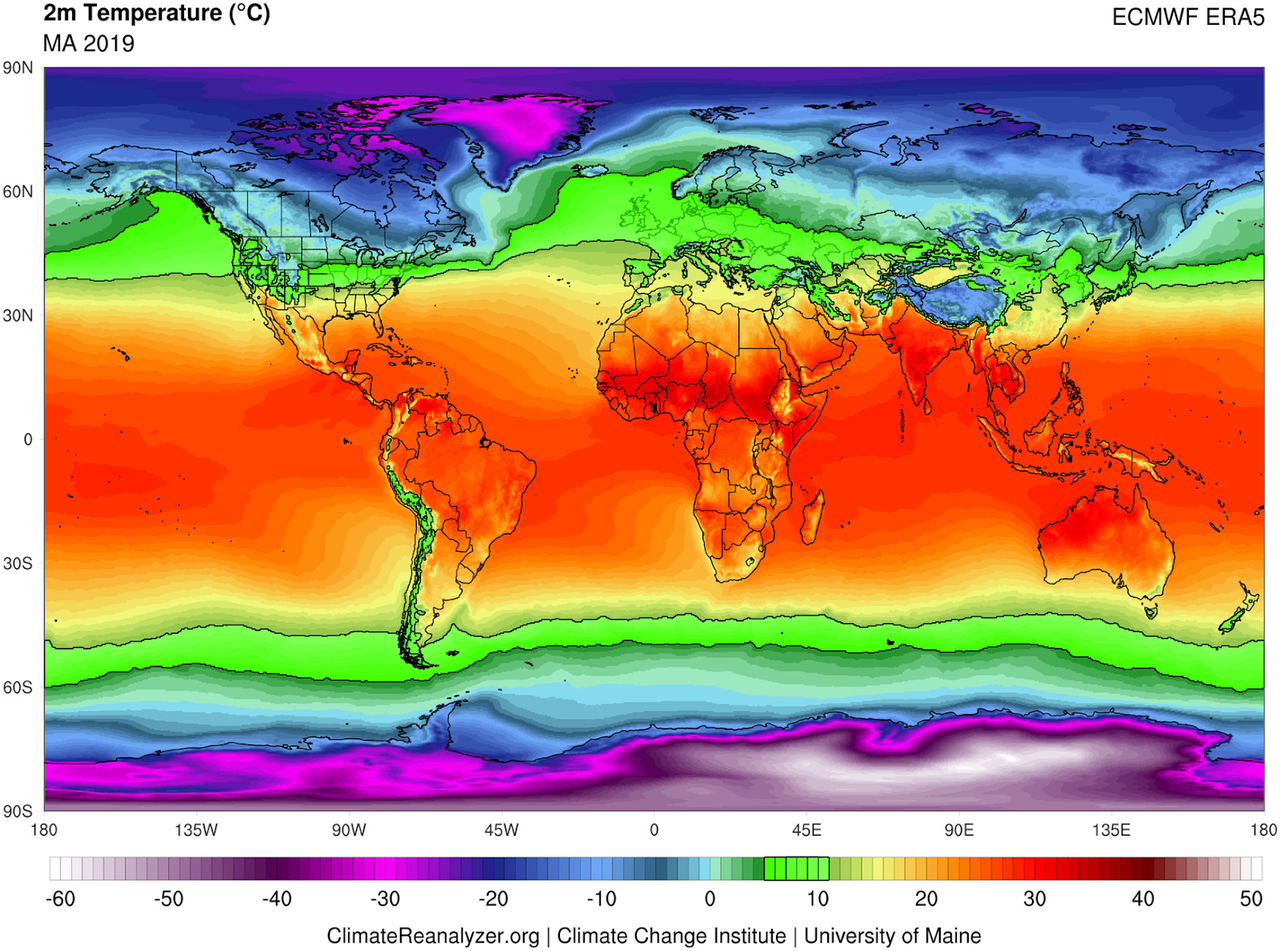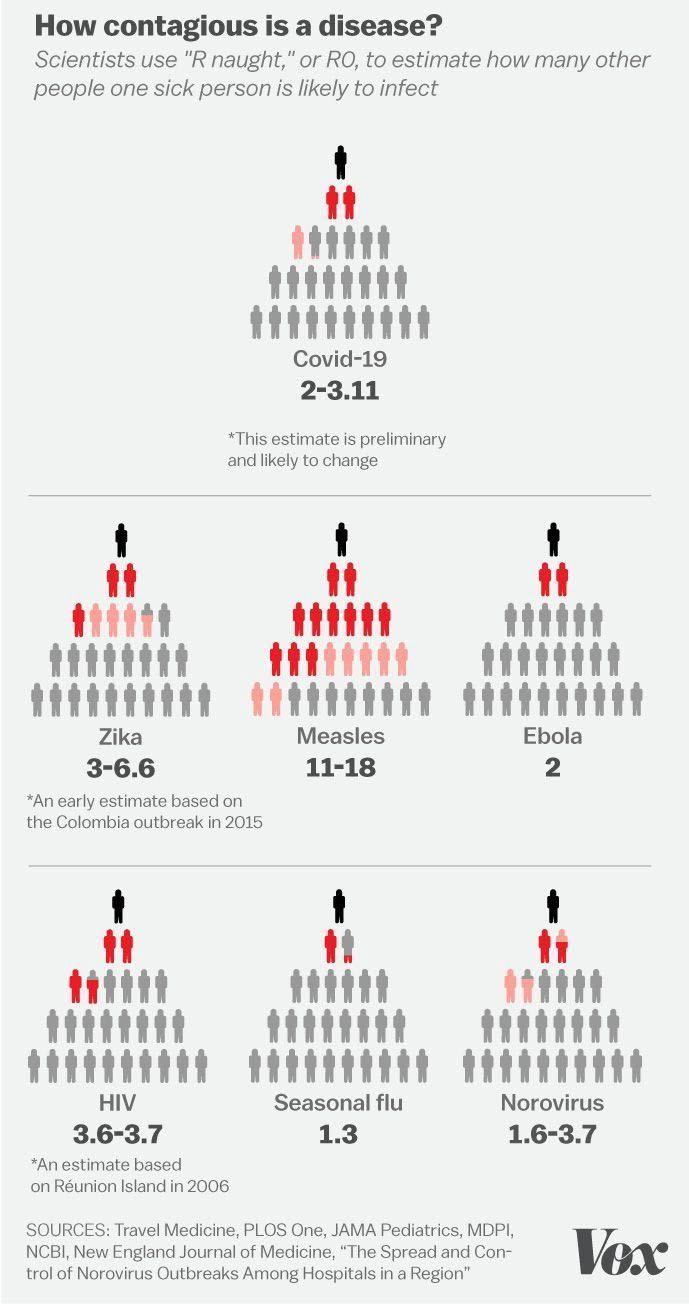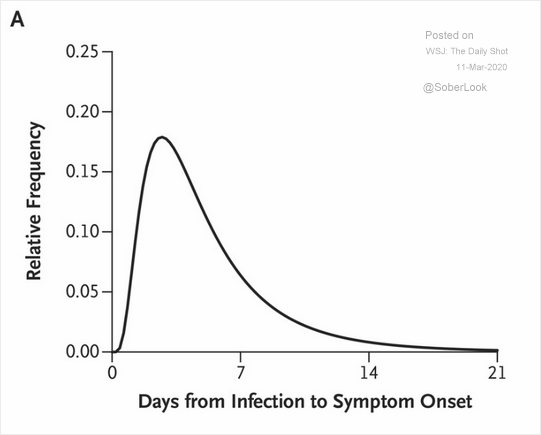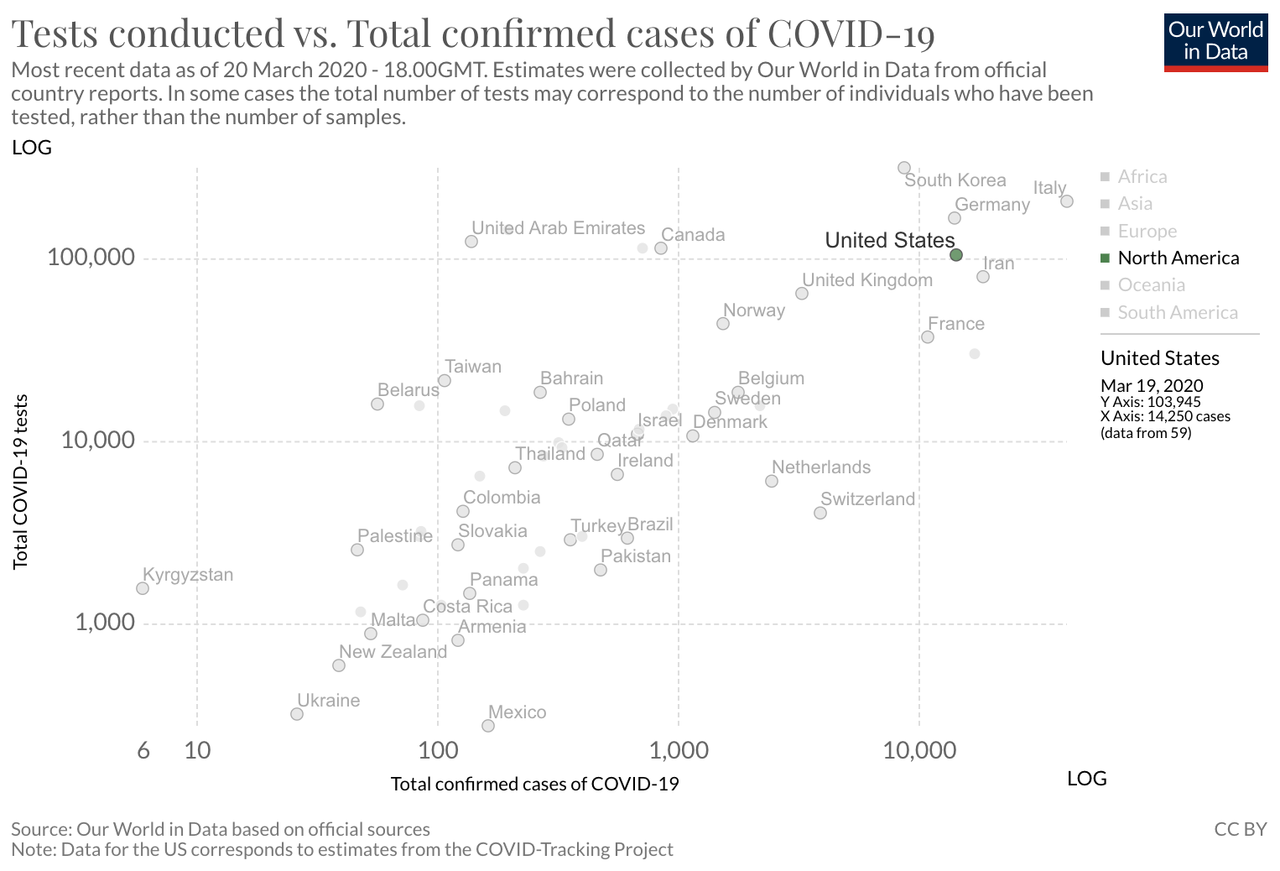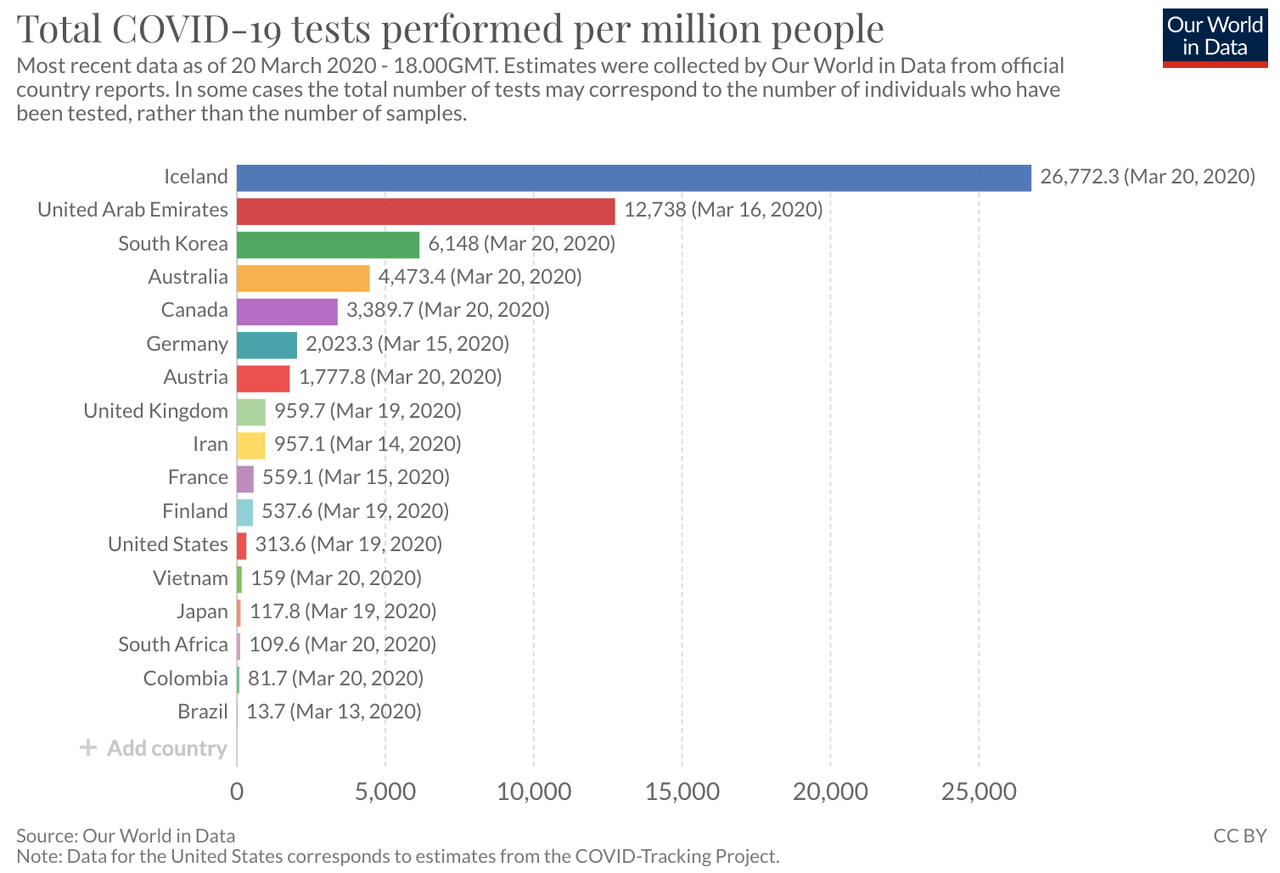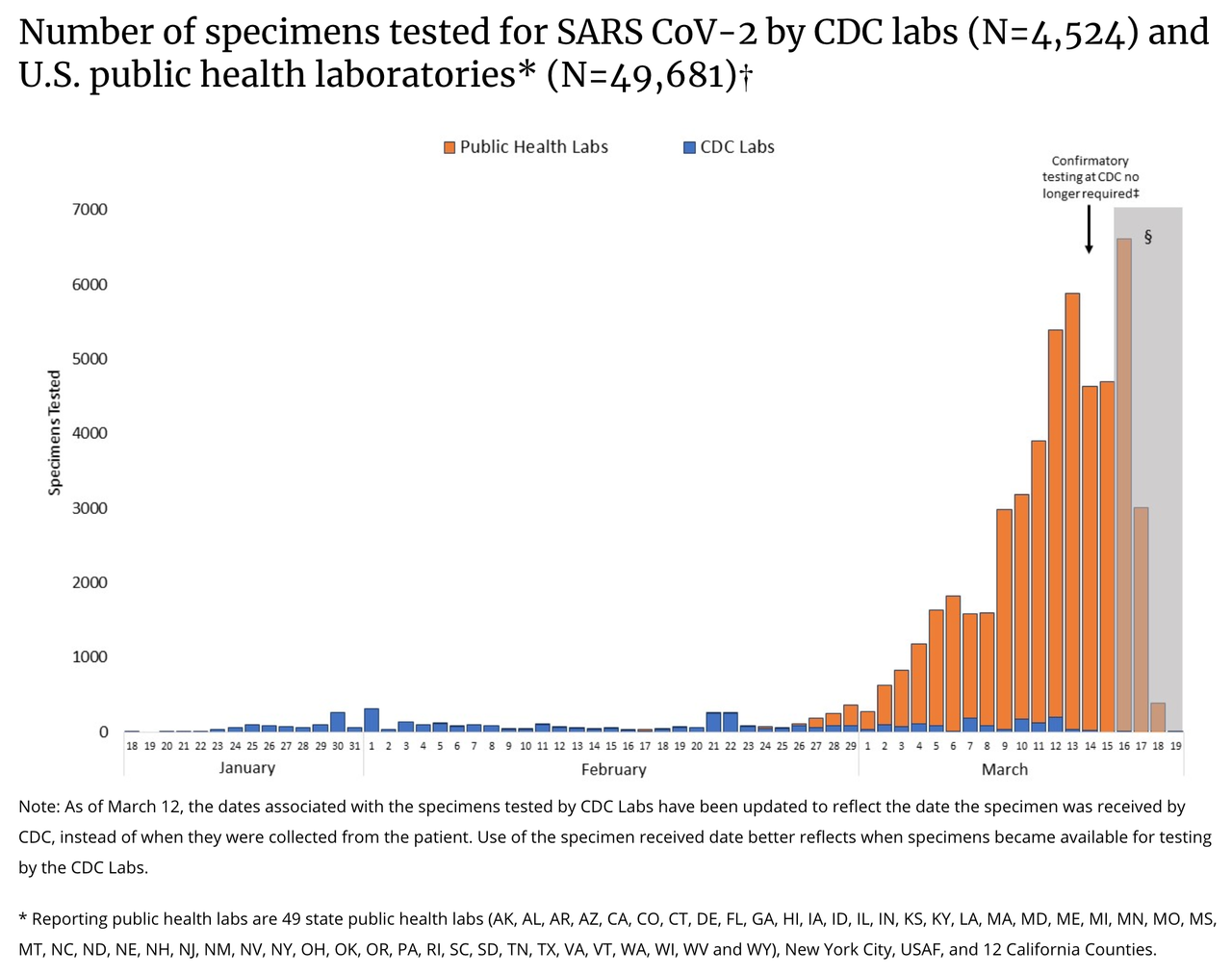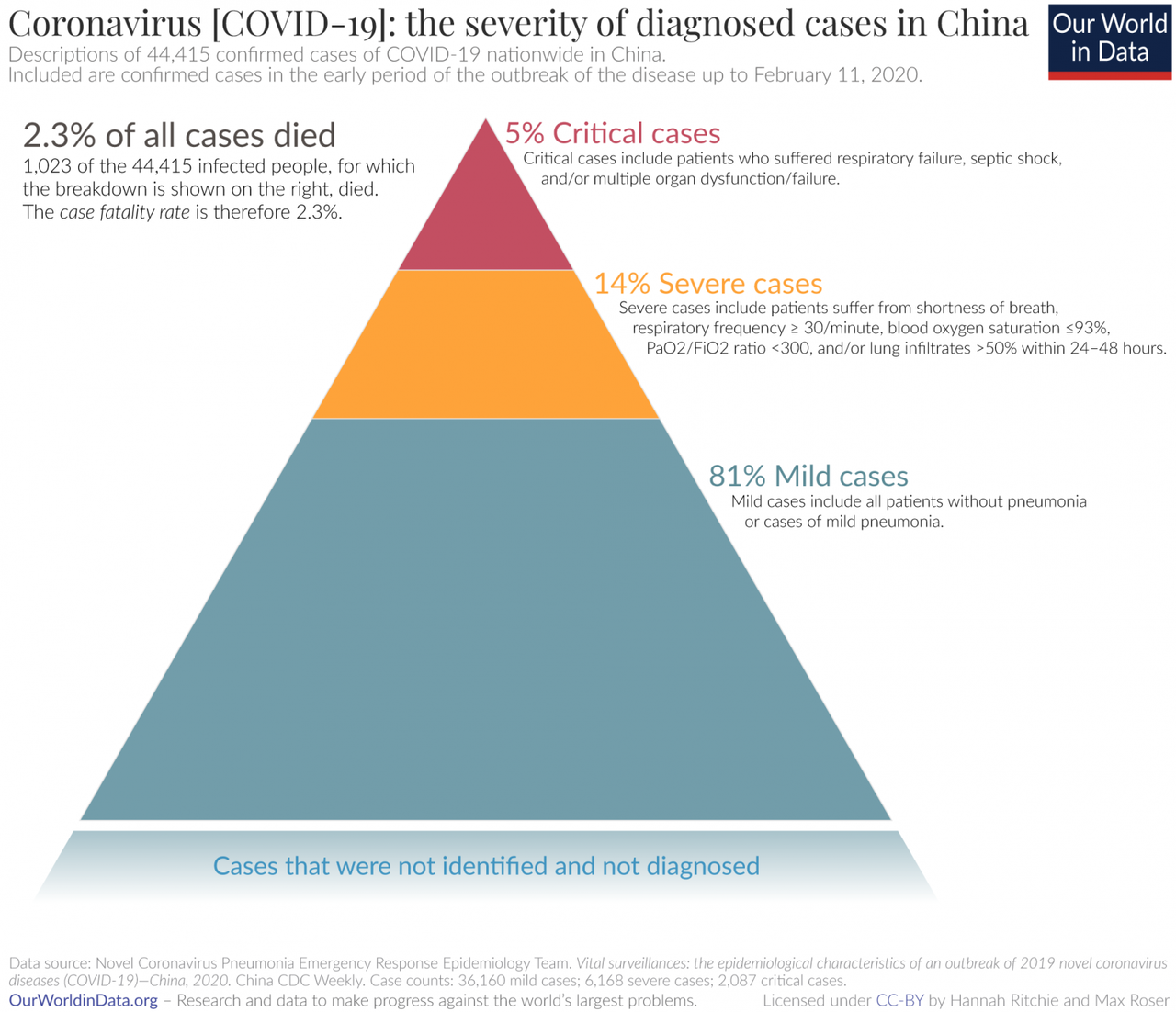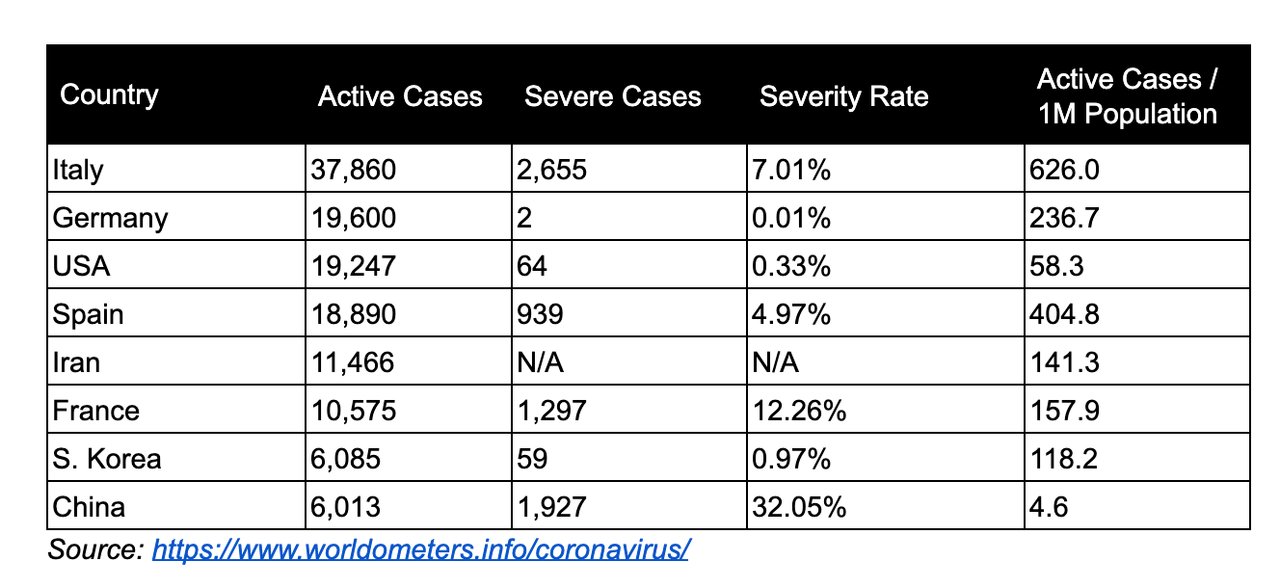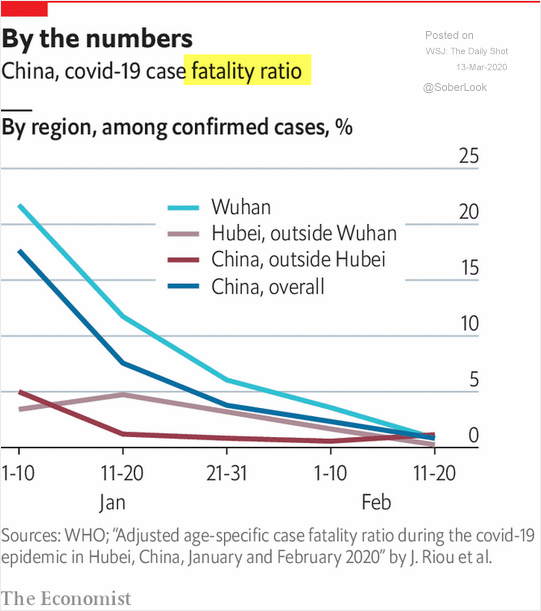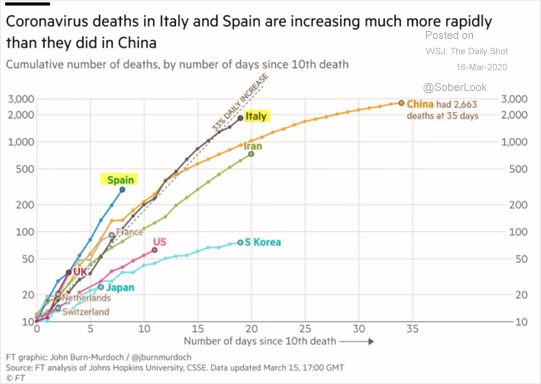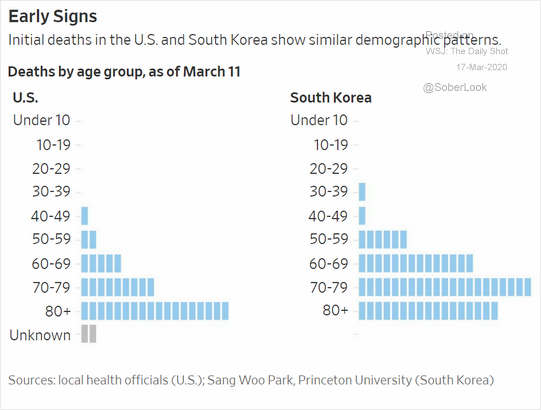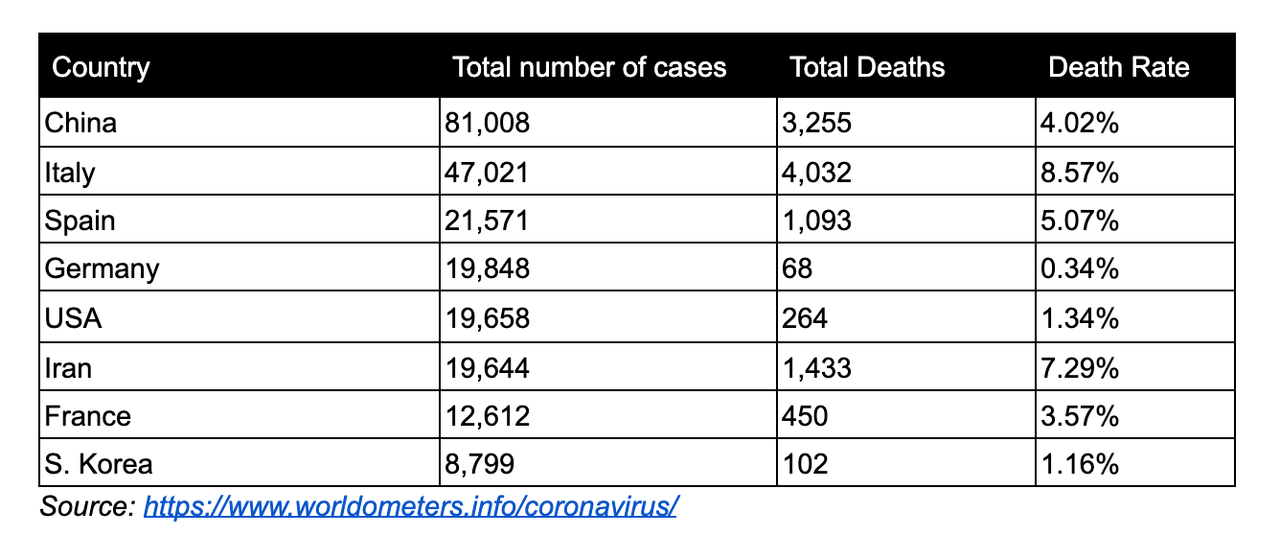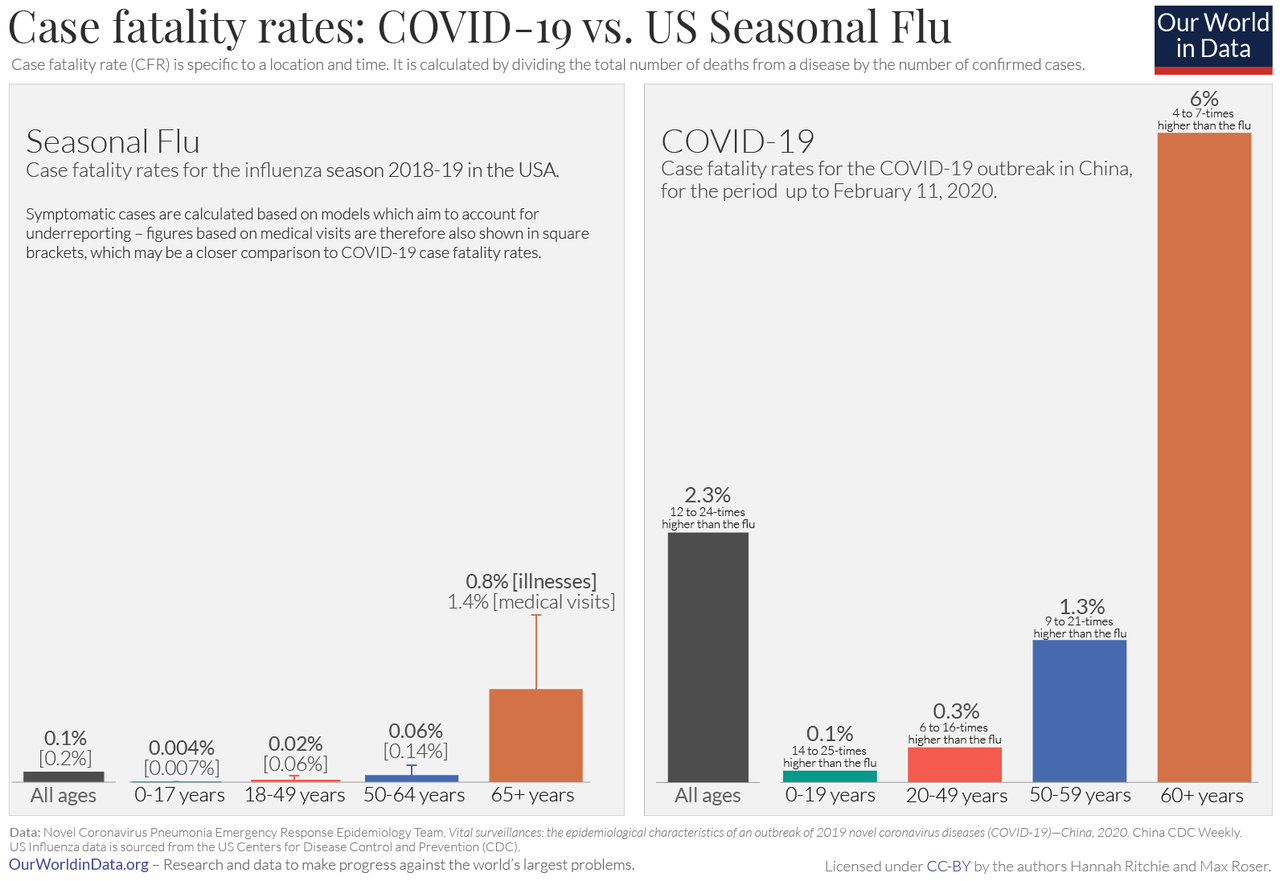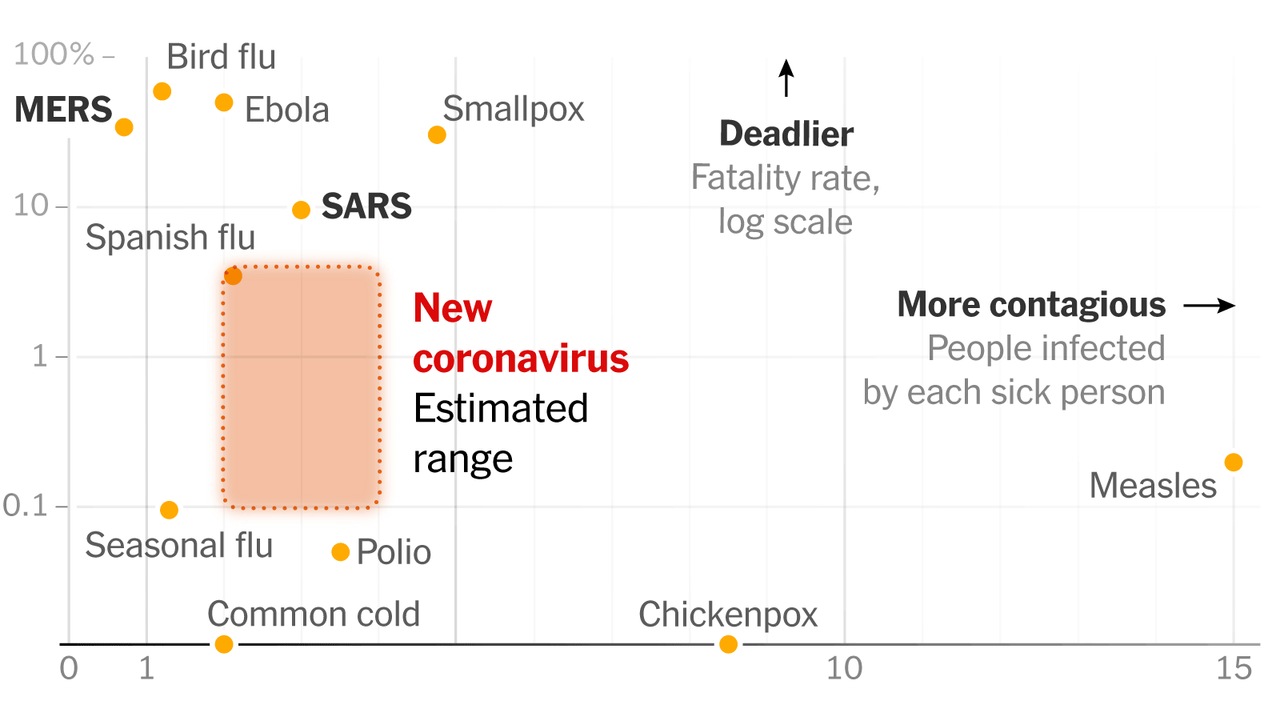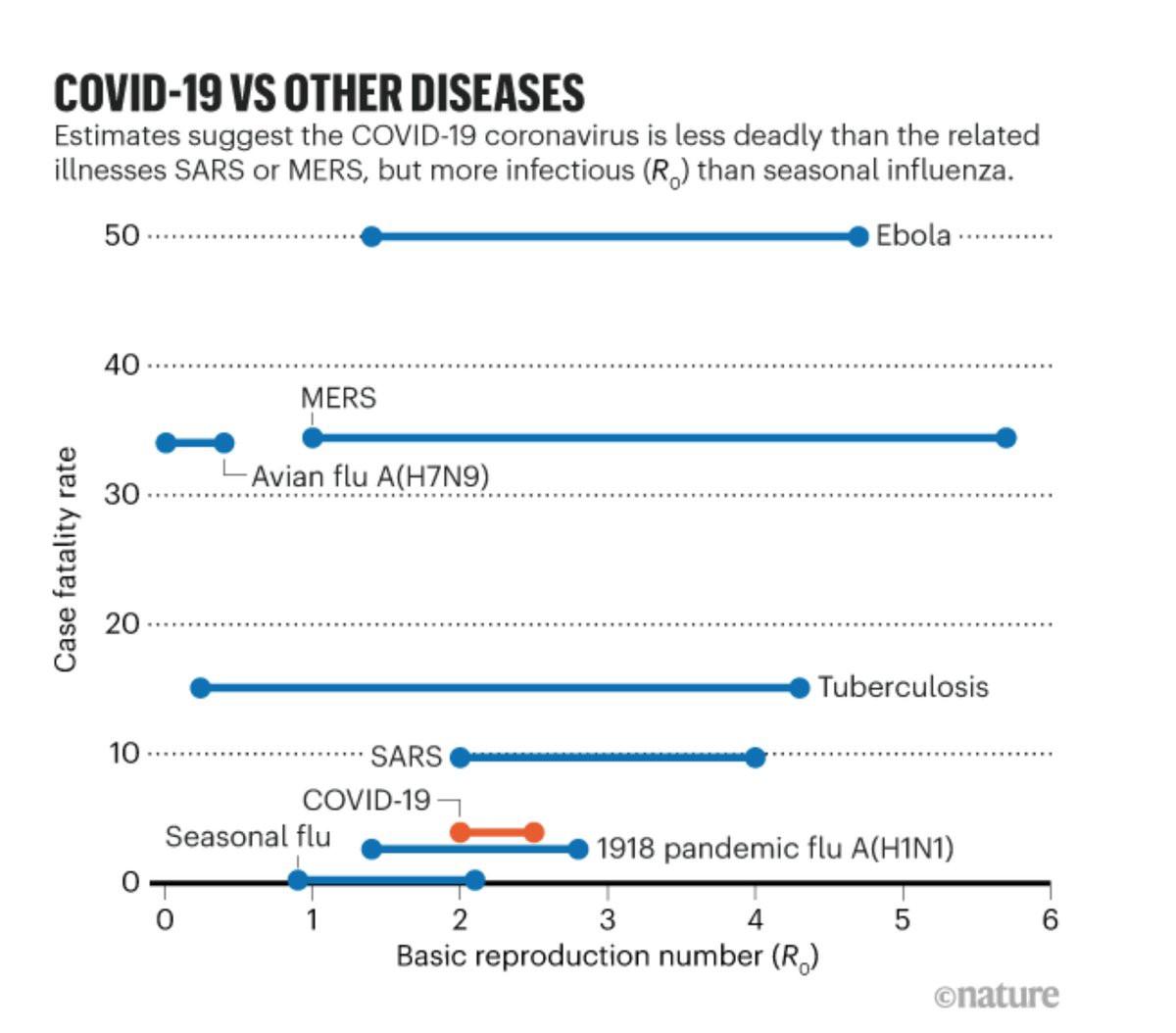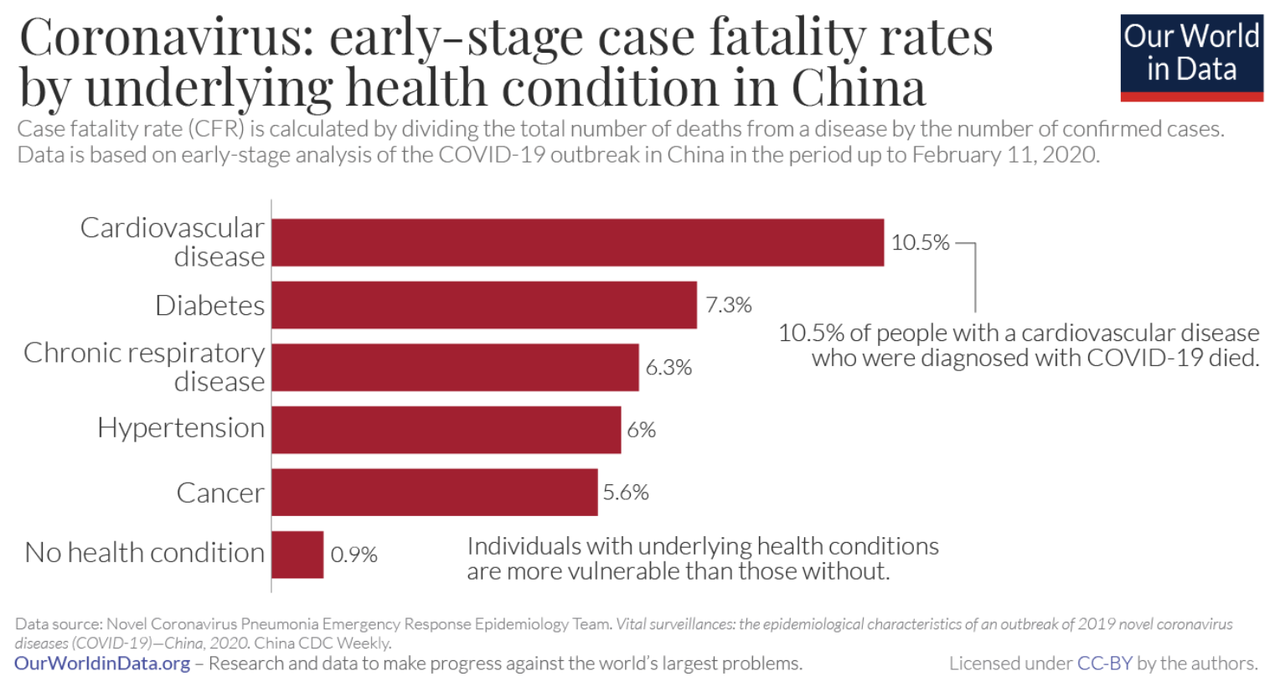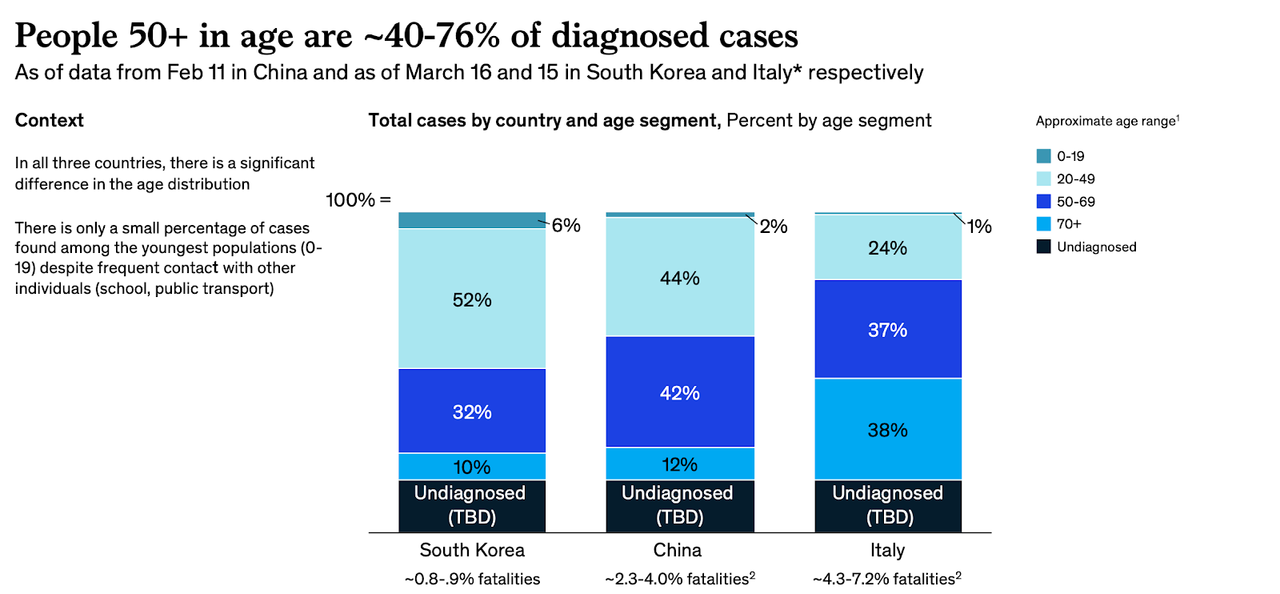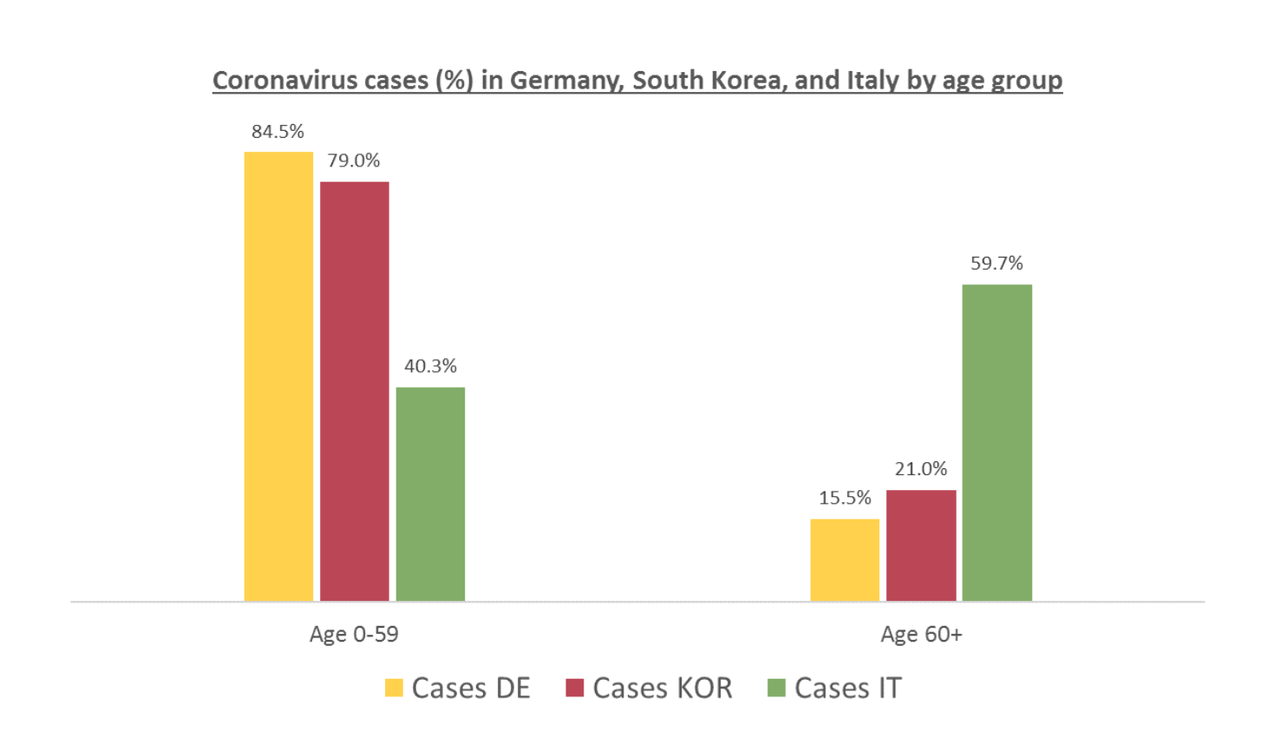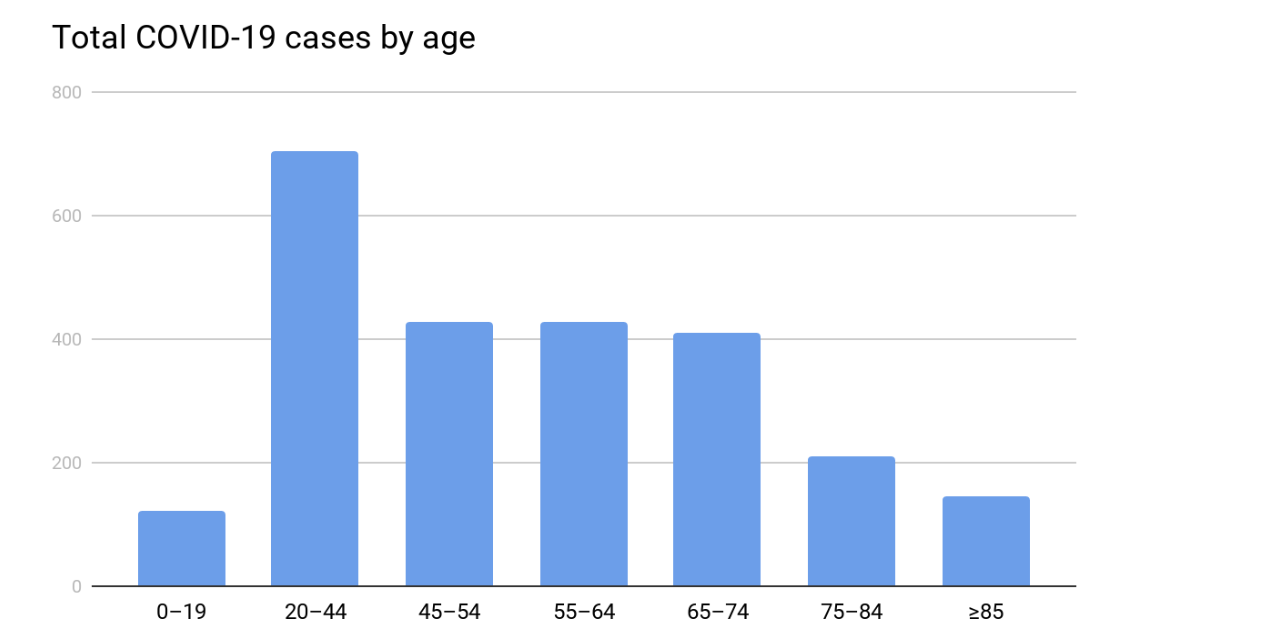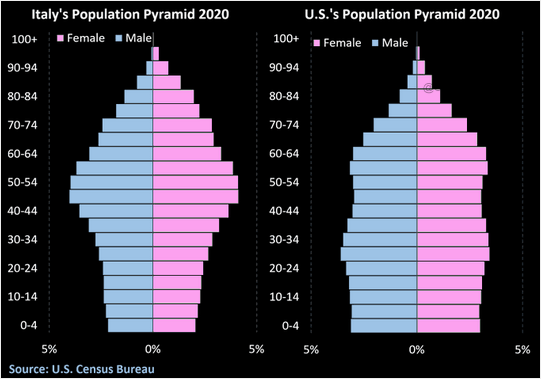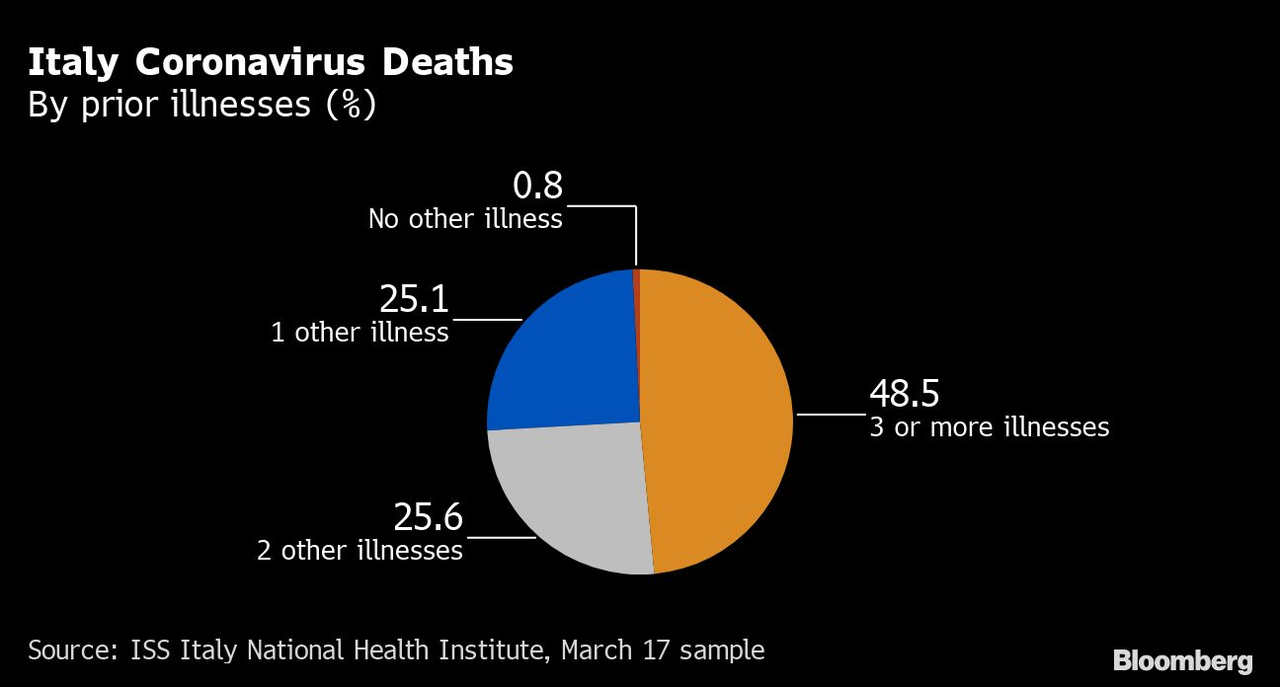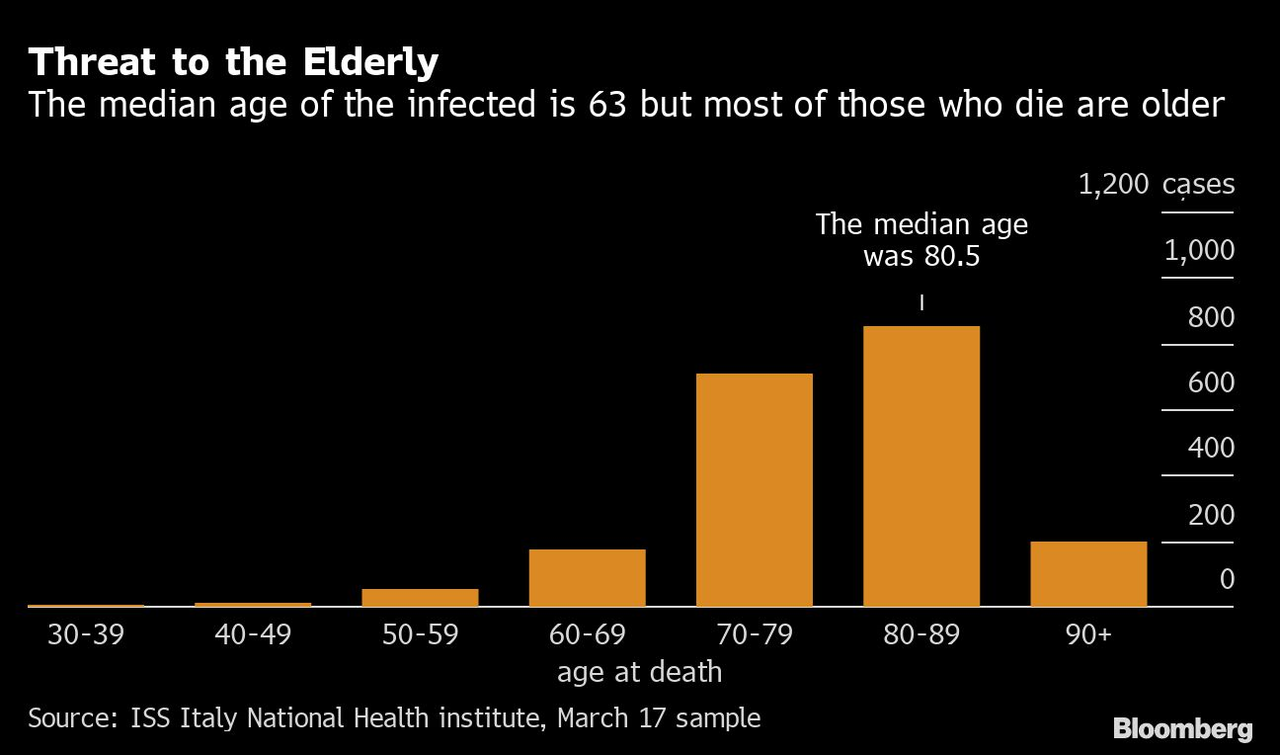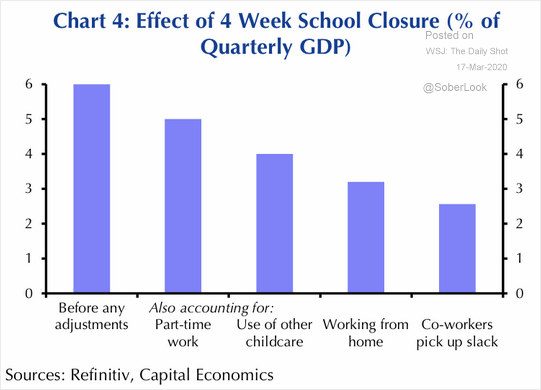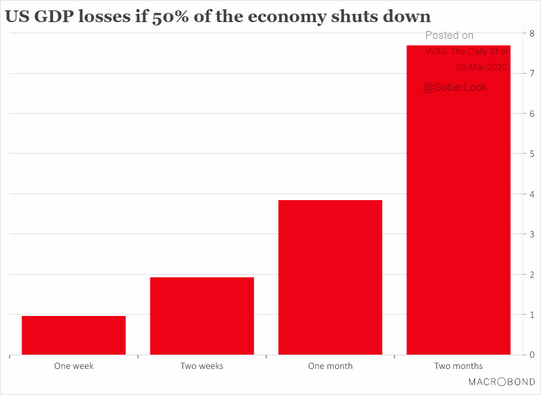After watching the outbreak of COVID-19 for the past two months, I’ve followed the pace of the infection, its severity, and how our world is tackling the virus. While we should be concerned and diligent, the situation has dramatically elevated to a mob-like fear spreading faster than COVID-19 itself.
When 13% of Americans believe they are currently infected with COVID-19 (mathematically impossible), full-on panic is blocking our ability to think clearly and determine how to deploy our resources to stop this virus. Over three-fourths of Americans are scared of what we are doing to our society through law and hysteria, not of infection or spreading COVID-19 to those most vulnerable.
The following article is a systematic overview of COVID-19 driven by data from medical professionals and academic articles that will help you understand what is going on (sources include CDC, WHO, NIH, NHS, University of Oxford, Stanford, Harvard, NEJM, JAMA, and several others). I’m quite experienced at understanding virality, how things grow, and data. In my vocation, I’m most known for popularizing the “growth hacking movement” in Silicon Valley that specializes in driving rapid and viral adoption of technology products. Data is data. Our focus here isn’t treatments but numbers. You don’t need a special degree to understand what the data says and doesn’t say. Numbers are universal.
I hope you walk away with a more informed perspective on how you can help and fight back against the hysteria that is driving our country into a dark place. You can help us focus our scarce resources on those who are most vulnerable, who need our help.
Note: The following graphs and numbers are as of mid-March 2020. Things are moving quickly, so I update this article twice a day. Most graphs are as of March 20th, 2020.
* * *
Total cases are the wrong metric
A critical question to ask yourself when you first look at a data set is, “What is our metric for success?”.
Let’s start at the top. How is it possible that more than 20% of Americans believe they will catch COVID-19? Here’s how. Vanity metrics — a single data point with no context. Wouldn’t this picture scare you?
Look at all of those large red scary circles!
These images come from the now infamous John Hopkins COVID-19 tracking map. What started as a data transparency effort has now molded into an unintentional tool for hysteria and panic.
An important question to ask yourself is what do these bubbles actually mean? Each bubble represents the total number of COVID-19 cases per country. The situation looks serious, yet we know that this virus is over four months old, so how many of these cases are active?
Immediately, we now see that just under half of those terrifying red bubbles aren’t relevant or actionable. The total number of cases isn’t illustrative of what we should do now. This is a single vanity data point with no context; it isn’t information or knowledge. To know how to respond, we need more numbers to tell a story and to paint the full picture. As a metaphor, the daily revenue of a business doesn’t tell you a whole lot about profitability, capital structure, or overhead. The same goes for the total number of cases. The data isn’t actionable. We need to look at ratios and percentages to tell us what to do next — conversion rate, growth rate, and severity.
Time lapsing new cases gives us perspective
Breaking down each country by the date of the first infection helps us track the growth and impact of the virus. We can see how total cases are growing against a consistent time scale.
Here are new cases time lapsed by country and date of first 100 total cases.
Here is a better picture of US confirmed case daily growth.
The United States is tracking with other European nations at doubling every three days or so. As we measure and test more Americans, this will continue to grow. Our time-lapse growth is lower than China, but not as good as South Korea, Japan, Singapore, or Taiwan. All are considered models of how to beat COVID-19. The United States is performing average, not great, compared to the other modern countries by this metric.
Still, there is a massive blindspot with this type of graph. None of these charts are weighted on a per-capita basis. It treats every country as a single entity, as we will see this fails to tell us what is going on in several aspects.
On a per-capita basis, we shouldn’t be panicking
Every country has a different population size which skews aggregate and cumulative case comparisons. By controlling for population, you can properly weigh the number of cases in the context of the local population size. Viruses don’t acknowledge our human borders. The US population is 5.5X greater than Italy, 6X larger than South Korea, and 25% the size of China. Comparing the US total number of cases in absolute terms is rather silly.
Rank ordering based on the total number of cases shows that the US on a per-capita basis is significantly lower than the top six nations by case volume. On a 1 million citizen per-capita basis, the US moves to above mid-pack of all countries and rising, with similar case volume as Singapore (385 cases), Cyprus (75 cases), and United Kingdom(3,983 cases). This is data as of March 20th, 2020.
But total cases even on a per-capita basis will always be a losing metric. The denominator (total population) is more or less fixed. We aren’t having babies at the pace of viral growth. Per-capita won’t explain how fast the virus is moving and if it is truly “exponential”.
COVID-19 is spreading, but probably not accelerating
Growth rates are tricky to track over time. Smaller numbers are easy to move than larger numbers. As an example, GDP growth of 3% for the US means billions of dollars while 3% for Bermuda means millions. Generally, growth rates decline over time, but the nominal increase may still be significant. This holds true of daily confirmed case increases. Daily growth rates declined over time across all countries regardless of particular policy solutions, such as shutting the borders or social distancing.
The daily growth data across the world is a little noisy.
Weighing daily growth of confirmed cases by a relative daily growth factor cleans up the picture, more than 1 is increasing and below 1 is declining. For all of March, the world has hovered around 1.1. This translates to an average daily growth rate of 10%, with ups and downs on a daily basis. This isn’t great, but it is good news as COVID-19 most likely isn’t increasing in virality. The growth rate of the growth rate is approximately 10%; however, the data is quite noisy. With inconsistent country-to-country reporting and what qualifies as a confirmed case, the more likely explanation is that we are increasing our measurement, but the virus hasn’t increased in viral capability. Recommended containment and prevention strategies are still quite effective at stopping the spread.
Cases globally are increasing (it is a virus after all!), but beware of believing metrics designed to intentionally scare like “cases doubling”. These are typically small numbers over small numbers and sliced on a per-country basis. Globally, COVID-19’s growth rate is rather steady. Remember, viruses ignore our national boundaries.
Viruses though don’t grow infinitely forever and forever. As with most things in nature, viruses follow a common pattern — a bell curve.
Watch the Bell Curve
As COVID-19 spreads and declines (which it will decline despite what the media tells you), every country will follow a similar pattern. The following is a more detailed graph of S. Korea’s successful defeat of COVID-19 compared also to China with thousands of more cases and deaths. It is a bell curve:
Here is a more detailed graph of S. Korea graphed against the total number of cases.
Here is a graph from Italy showing a bell curve in symptom onset and number of cases, which may point to the beginning of the end for Italy —
Bell curves is the dominant trait of outbreaks. A virus doesn’t grow linearly forever. It accelerates, plateaus, and then declines. Whether it is environmental or our own efforts, viruses accelerate and quickly decline. This fact of nature is represented in Farr’s law. CDC’s of “bend the curve” or “flatten the curve” reflects this natural reality.
It is important to note that in both scenarios, the total number of COVID-19 cases will be similar. “Flattening the curve”’s focus is a shock to the healthcare system which can increase fatalities due to capacity constraints. In the long-term, it isn’t infection prevention. Unfortunately, “flattening the curve” doesn’t include other downsides and costs of execution.
Both the CDC and WHO are optimizing virality and healthcare utilization, while ignoring the economic shock to our system. Both organizations assume you are going to get infected, eventually, and it won’t be that bad.
A low probability of catching COVID-19
The World Health Organization (“WHO”) released a study on how China responded to COVID-19. Currently, this study is one of the most exhaustive pieces published on how the virus spreads.
The results of their research show that COVID-19 doesn’t spread as easily as we first thought or the media had us believe (remember people abandoned their dogs out of fear of getting infected). According to their report if you come in contact with someone who tests positive for COVID-19 you have a 1–5% chance of catching it as well. The variability is large because the infection is based on the type of contact and how long.
The majority of viral infections come from prolonged exposures in confined spaces with other infected individuals. Person-to-person and surface contact is by far the most common cause. From the WHO report, “When a cluster of several infected people occurred in China, it was most often (78–85%) caused by an infection within the family by droplets and other carriers of infection in close contact with an infected person.
From the CDC’s study on transmission in China and Princess Cruise outbreak -
A growing body of evidence indicates that COVID-19 transmission is facilitated in confined settings; for example, a large cluster (634 confirmed cases) of COVID-19 secondary infections occurred aboard a cruise ship in Japan, representing about one fifth of the persons aboard who were tested for the virus. This finding indicates the high transmissibility of COVID-19 in enclosed spaces
Dr. Paul Auwaerter, the Clinical Director for the Division of Infectious Diseases at Johns Hopkins University School of Medicine echoes this finding,
“If you have a COVID-19 patient in your household, your risk of developing the infection is about 10%….If you were casually exposed to the virus in the workplace (e.g., you were not locked up in conference room for six hours with someone who was infected [like a hospital]), your chance of infection is about 0.5%”
According to Dr. Auwaerter, these transmission rates are very similar to the seasonal flu.
Air-based transmission or untraceable community spread is very unlikely. According to WHO’s COVID-19 lead Maria Van Kerkhove, true community based spreading is very rare. The data from China shows that community-based spread was only a very small handful of cases. “This virus is not circulating in the community, even in the highest incidence areas across China,” Van Kerkhove said.
“Transmission by fine aerosols in the air over long distances is not one of the main causes of spread. Most of the 2,055 infected hospital workers were either infected at home or in the early phase of the outbreak in Wuhan when hospital safeguards were not raised yet,” she said.
True community spread involves transmission where people get infected in public spaces and there is no way to trace back the source of infection. WHO believes that is not what the Chinese data shows. If community spread was super common, it wouldn’t be possible to reduce the new cases through “social distancing”.
“We have never seen before a respiratory pathogen that’s capable of community transmission but at the same time which can also be contained with the right measures. If this was an influenza epidemic, we would have expected to see widespread community transmission across the globe by now and efforts to slow it down or contain it would not be feasible,” said Tedros Adhanom, Director-General of WHO.
An author of a working paper from the Department of Ecology and Evolutionary Biology at Princeton University said, “The current scientific consensus is that most transmission via respiratory secretions happens in the form of large respiratory droplets … rather than small aerosols. Droplets, fortunately, are heavy enough that they don’t travel very far and instead fall from the air after traveling only a few feet.”
The media was put into a frenzy when the above authors released their study on COVID-19’s ability to survive in the air. The study did find the virus could survive in the air for a couple of hours; however, this study was designed as academic exercise rather than a real-world test. This study put COVID-19 into a spray bottle to “mist” it into the air. I don’t know anyone who coughs in mist form and it is unclear if the viral load was large enough to infect another individual As one doctor, who wants to remain anonymous, told me, “Corona doesn’t have wings”.
To summarize, China, Singapore, and South Korea’s containment efforts worked because community-based and airborne transmission aren’t common. The most common form of transmission is person-to-person or surface-based.
Common transmission surfaces
COVID-19’s ability to live for a long period of time is limited on most surfaces and it is quite easy to kill with typical household cleaners, just like the normal flu.
- COVID-19 be detected on copper after 4 hours and 24 hours on cardboard.
- COVID-19 survived best on plastic and stainless steel, remaining viable for up to 72 hours
- COVID-19 is very vulnerable to UV light and heat.
Presence doesn’t mean infectious. The viral concentration falls significantly over time. The virus showed a half-life of about 0.8 hours on copper, 3.46 hours on cardboard, 5.6 hours on steel and 6.8 hours on plastic.
According to Dylan Morris, one of the authors, “We do not know how much virus is actually needed to infect a human being with high probability, nor how easily the virus is transferred from the cardboard to one’s hand when touching a package”
According to Dr. Auwaerter, “It’s thought that this virus can survive on surfaces such as hands, hard surfaces, and fabrics. Preliminary data indicates up to 72 hours on hard surfaces like steel and plastic, and up to 12 hours on fabric.”
COVID-19 will likely “burn off” in the summer
Due to COVID-19’s sensitivity to UV light and heat (just like the normal influenza virus), it is very likely that it will “burn off” as humidity increases and temperatures rise.
Released on March 10th, one study mapped COVID-19 virality capability by high temperature and high humidity. It found that both significantly reduced the ability of the virus to spread from person-to-person. From the study,
“This result is consistent with the fact that the high temperature and high humidity significantly reduce the transmission of influenza. It indicates that the arrival of summer and rainy season in the northern hemisphere can effectively reduce the transmission of the COVID-19.”
The University of Maryland mapped severe COVID-19 outbreaks with local weather patterns around the world, from the US to China. They found that the virus thrives in a certain temperature and humidity channel. “The researchers found that all cities experiencing significant outbreaks of COVID-19 have very similar winter climates with an average temperature of 41 to 52 degrees Fahrenheit, an average humidity level of 47% to 79% with a narrow east-west distribution along the same 30–50 N” latitude”, said the University of Maryland.
“Based on what we have documented so far, it appears that the virus has a harder time spreading between people in warmer, tropical climates,” said study leader Mohammad Sajadi, MD, Associate Professor of Medicine in the UMSOM, physician-scientist at the Institute of Human Virology and a member of GVN.
In the image below, the zone at risk for a significant community spread in the near-term includes land areas within the green bands.
Children and Teens aren’t at risk
It’s already well established that the young aren’t particularly vulnerable. In fact, there isn’t a single death reported below the age of 10 in the world and most children who test positive don’t show symptoms. As well, infection rates are lower for individuals below the age of 19, which is similar to SARS and MERS (COVID-19’s sister viruses).
According to the WHO’s COVID-19 mission in China, only 8.1% of cases were 20-somethings, 1.2% were teens, and 0.9% were 9 or younger. As of the study date February 20th, 78% of the cases reported were ages 30 to 69. The WHO hypothesizes this is for a biological reason and isn’t related to lifestyle or exposure.
“Even when we looked at households, we did not find a single example of a child bringing the infection into the household and transmitting to the parents. It was the other way around. And the children tend to have a mild disease,” said Van Kerkhove.
According to a WSJ article, children have a near-zero chance of becoming ill. They are more likely to get normal flu than COVID-19.
- A World Health Organization report on China concluded that cases of Covid-19 in children were “relatively rare and mild.” Among cases in people under age 19, only 2.5% developed severe disease while 0.2% developed critical disease. Among nearly 6,300 Covid-19 cases reported by the Korea Centers for Disease Control & Prevention on March 8, there were no reported deaths in anyone under 30. Only 0.7% of infections were in children under 9 and 4.6% of cases were in those ages 10 to 19 years old
- Only 2% of the patients in a review of nearly 45,000 confirmed Covid-19 cases in China were children, and there were no reported deaths in children under 10, according to a study published in JAMA last month. (In contrast, there have been 136 pediatric deaths from influenza in the U.S. this flu season.)
- About 8% of cases were in people in their 20s. Those 10 to 19 years old accounted for 1% of cases and those under 10 also accounted for only 1%.
However even if children and teens are not suffering severe symptoms themselves, they may “shed” large amounts of virus and may do so for many days, says James Campbell, a professor of pediatrics at the University of Maryland School of Medicine.
Children had a virus in their secretions for six to 22 days or an average of 12 days. “Shedding virus doesn’t always mean you’re able to transmit the virus”, he notes. It is still important to consider that prolonged shedding of high viral loads from children is still a risky combination within the home since the majority of transmission occurs within a home-like confined environment.
A strong, but unknown viral effect
While the true viral capacity is unknown at this moment, it is theorized that COVID-19 is more than the seasonal flu but less than other viruses. The average number of people to which a single infected person will transmit the virus, or Ro, range from as low as 1.5 to a high of 3.0
Newer analysis suggests that this viral rate is declining. According to Nobel Laureate and biophysicist Michael Levitt, the infection rate is declining -
“Every coronavirus patient in China infected on average 2.2 people a day — spelling exponential growth that can only lead to disaster. But then it started dropping, and the number of new daily infections is now close to zero.” He compared it to interest rates again: “even if the interest rate keeps dropping, you still make money. The sum you invested does not lessen, it just grows more slowly. When discussing diseases, it frightens people a lot because they keep hearing about new cases every day. But the fact that the infection rate is slowing down means the end of the pandemic is near.”
What about asymptomatic spread?
The majority of cases see symptoms within a few days, not two weeks as originally believed.
On true asymptomatic spread, the data is still unclear but increasingly unlikely. Two studies point to a low infection rate from pre-symptomatic and asymptomatic individuals. One study said 10% of infections come from people who don’t show symptoms, yet. Another WHO study reported 1.2% of confirmed cases were truly asymptomatic. Several studies confirming asymptotic spread have ended up disproven. It is important to note there is a difference between “never showing symptoms” and “pre-symptomatic” and the media is promoting an unproven narrative. Almost all people end up in the latter camp within five days, almost never the former. It is very unlikely for individuals with COVID-19 to never show symptoms. WHO and CDC claim that asymptomatic spread isn’t a concern and quite rare.
Iceland is leading the global in testing its entire population of ~300,000 for asymptomatic spread, not just those that show symptoms. They randomly tested 1,800 citizens who don’t show symptoms and, as far as they knew, were not exposed to positive individuals. Of this sample, only 19 tested positive for COVID-19, or 1.1% of the sample.
Obviously, this type of viral spread is the most concerning; however based on the level of media attention and the global size of positive infections, it seems more probable we keep looking for a COVID-19 viral trait that doesn’t exist.
Another way of looking at virality and asymptotic spread is the number of flight attendants, airport staff, or pilots that have tested positive for COVID-19. Out of the thousands of flights since November 2019, only a handful of airport and airline staff have tested positive (such as AA pilot, some BA staff, and several TSA employees).
Outside of medical and hospital staff, these individuals are in greatest contact with infected persons in confined spaces. Despite having no protective gear and most likely these people were asymptomatic, airline and airport staff aren’t likely to catch COVID-19 compared to the rest of the population. Those employed in the travel sector are infected at a lower rate than the general population or healthcare workers.
“We still believe, looking at the data, that the force of infection here, the major driver, is people who are symptomatic, unwell, and transmitting to others along the human-to-human route,” Dr. Mike Ryan of WHO Emergencies Program.
If the symptoms are so close to other less fatal coronaviruses, what is the positivity rate of those tested?
93% of people who think they are positive aren’t
Looking at the success in S. Korea and Singapore, the important tool in our war chest is measurement. If we are concerned about the general non-infected population, what is the probability those who show symptoms actually test positive? What is the chance that the cough from your neighbor is COVID-19? This “conversion rate” will show whether or not you have a cold (another coronavirus) or heading to isolation for two weeks. Global data shows that ~95% of people who are tested aren’t positive. The positivity rate varies by country.
- UK: 7,132 concluded tests, of which 13 positive (0.2% positivity rate).
- UK: 48,492 tests, of which 1,950 (4.0% positivity rate)
- Italy: 9,462 tests, of which 470 positive (at least 5.0% positivity rate).
- Italy: 3,300 tests, of which 99 positive (3.0% positivity rate)
- Iceland: 3,787 tests, of which 218 positive (5.7% positive rate)
- France: 762 tests, of which 17 positive, 179 awaiting results (at least 2.2% positivity rate).
- Austria: 321 tests, of which 2 positive, awaiting results: unknown (at least 0.6% positivity rate).
- South Korea: 66,652 tests with 1766 positives 25,568 awaiting results (4.3% positivity rate).
- United States: 445 concluded tests, of which 14 positive (3.1% positivity rate).
In the US, drive-thru testing facilities are being deployed around the nation. Gov. Cuomo of NY released initial data from their drive-thru testing. Out of the 600~ that was tested in a single day, ~7% were positive. Tested individuals actively show symptoms and present a doctor’s note. This result is similar to public tracking on US nationwide positivity rate.
University of Oxford’s Our World in Data attempts to track public reporting on individuals tested vs positive cases of COVID-19. For the US, it estimates 14.25% of those tested are positive.
Last week, the US was significantly behind in testing, near the bottom of all countries worldwide. As of March 20th, a week later, the US is much closer to other G8 and European countries, but there is a long way to go.
Based on the initial results and the results from other countries, the total number of positive COVID-19 cases will increase as testing increases, but the fatality rate will continue to fall and the severity case mix will fall.
In general, the size of the US population infected with COVID-19 will be much smaller than originally estimated as most symptomatic individuals aren’t positive. 93% — 99% have other conditions.
Globally, the US has a long way to go to catch up in testing. As testing expands, the total number of cases will increase, but the mild to severe case ratio will decline dramatically.
1% of cases will be severe
Looking at the whole funnel from top to bottom, ~1% of everyone who is tested for COVID-19 with the US will have a severe case that will require a hospital visit or long-term admission.
Globally, 80–85% of all cases are mild. These will not require a hospital visit and home-based treatment/ no treatment is effective.
As of mid-March, the US has a significantly lower case severity rate than other countries. Our current severe caseload is similar to South Korea. This data has been spotty in the past; however, lower severity is reflected in the US COVID-19 fatality rates (addressed later).
Early reports from CDC, suggest that 12% of COVID-19 cases need some form of hospitalization, which is lower than the projected severity rate of 20%, with 80% being mild cases.
For context, this year’s flu season has led to at least 17 million medical visits and 370,000 hospitalizations (0.1%) out of 30–50 million infections. Recalling that only comparing aggregate total cases isn’t helpful, breaking down active cases on a per-capita basis paints a different picture on severity. This is data as of March 20th, 2020.
Declining fatality rate
As the US continues to expand testing, the case fatality rate will decline over the next few weeks. There is little doubt that serious and fatal cases of COVID-19 are being properly recorded. What is unclear is the total size of mild cases. WHO originally estimated a case fatality rate of 4% at the beginning of the outbreak but revised estimates downward 2.3% — 3% for all age groups. CDC estimates 0.5% — 3%, however stresses that closer to 1% is more probable. Dr. Paul Auwaerter estimated 0.5% — 2%, leaning towards the lower end. A paper released on March 19th analyzed a wider data set from China and lowered the fatality rate to 1.4%. This won’t be clear for the US until we see the broader population that is positive but with mild cases. With little doubt, the fatality rate and severity rate will decline as more people are tested and more mild cases are counted.
Higher fatality rates in China, Iran, and Italy are more likely associated with a sudden shock to the healthcare system unable to address demands and doesn’t accurately reflect viral fatality rates. As COVID-19 spread throughout China, the fatality rate drastically fell outside of Hubei. This was attributed to the outbreak slowing spreading to several provinces with low infection rates.
John P.A. Ioannidis is professor of medicine, of epidemiology and population health, of biomedical data science, and of statistics at Stanford University and co-director of Stanford’s Meta-Research Innovation Center recently wrote about fatality rates and how our current instrumentation is leading to faulty policy solutions:
“The one situation where an entire, closed population was tested was the Diamond Princess cruise ship and its quarantine passengers. The case fatality rate there was 1.0%, but this was a largely elderly population, in which the death rate from Covid-19 is much higher.Projecting the Diamond Princess mortality rate onto the age structure of the U.S. population, the death rate among people infected with Covid-19 would be 0.125%. But since this estimate is based on extremely thin data — there were just seven deaths among the 700 infected passengers and crew — the real death rate could stretch from five times lower (0.025%) to five times higher (0.625%). It is also possible that some of the passengers who were infected might die later, and that tourists may have different frequencies of chronic diseases — a risk factor for worse outcomes with SARS-CoV-2 infection — than the general population. Adding these extra sources of uncertainty…”“Reasonable estimates for the case fatality ratio in the general U.S. population vary from 0.05% to 1%.”
Looking at the US fatality, the fatality rate is drastically declining as the number of cases increases, halving every four or five days. The fatality rate will eventually level off and plateau as the US case-mix becomes apparent.
- 4.06% March 8 (22 deaths of 541 cases)
- 3.69% March 9 (26 of 704)
- 3.01% March 10 (30 of 994)
- 2.95% March 11 (38 of 1,295)
- 2.52% March 12 (42 of 1,695)
- 2.27% March 13 (49 of 2,247)
- 1.93% March 14 (57 of 2,954)
- 1.84% March 15 (68 of 3,680)
- 1.90% March 16 (86 of 4,503)
- 1.76% March 17 (109 of 6,196)
- 1.66% March 18 (150 of 9,003)
- 1.51% March 19th (208 of 13,789)
- 1.32% March 20th (256 of 19,383)
Source: Worldometers.info
Mapped against other countries, our fatality rate and case-mix are following a similar pattern to South Korea which is a good sign, a supposed model of how to manage COVID-19.
Here are deaths weighted by the total number of cases as of March 20th, 2020. Ranked by the total number of cases, our death rate is closer to South Korea’s than Spain’s or Italy’s.
The initial higher fatality rate for the US is trending much lower than originally estimated.
A study of about half deaths within the US (154 of 264), almost all fit a similar demographic profile as the other global ~11,000 fatalities.
Another analysis by Nature, comparing the fatality rate (since revised down) and infectious rate of COVID-19 to other illnesses. COVID-19 is now within range of its other sisters of less potent coronaviruses.
As the global health community continues to gather and report data, the claim that “COVID-19 isn’t just like the flu” (though still severe) is looking less credible as fatality rates continue to decline and measuring of mild cases increases.
It is important to consider case-mix when looking at fatality rates. The fatality rate is significantly higher for patients with an underlying condition.
The fatality rates by underling condition mimics the rise in the average fatality rate with those with underlying conditions who get the seasonal flu.
- Pneumonia and influenza: 1.53% — 1.93%
- Chronic lower respiratory disease: 1.48% — 1.93%
- All respiratory causes: 3.04% — 4.14%
- Heart disease: 3.21% — 4.4%
- Cancer: 0.68% — 1.05%
- Diabetes: 0.26% — 0.39%
- For all underlying conditions: 10.17% — 13.67%.
Comparing case-mix across countries with a wide range of fatality (China and Italy) and those with low fatality rates (S. Korea) reveals a stark difference in age; therefore, underlying conditions also vary significantly across countries. These two factors contribute the most to a country’s fatality rate.
Source: Goldman Sachs
Divided by most at risk and low risk, Italy had significantly more cases of high at-risk patients than Germany or Korea
Based on an initial CDC study of 2,449 COVID-19 cases (almost half of current US cases have missing demographic data), the United States case-mix looks more like S. Korea and Germany rather than China or Italy. Approximately 69% of COVID-19 cases are in the lower at-risk population of under 65, while 31% are older than 65 higher risk population.
This suggests the US will experience a declining fatality rate; however, the US has over 100 million adults with underlying and chronic illnesses that will negatively impact our fatality rate.
An older population skew within the infected population explains most of the disparity in fatality rates between high and low countries. According to a study of the fatalities of COVID-19 cases in Italy, 99% of all deaths had an underlying pathology. Only 0.8% had no underlying condition.
Most of those infected in Italy were over the age of 60, but the median age of a fatality was 80. All of Italy’s fatality under the age of 40 were males with serious pre-existing medical conditions.
This doesn’t factor in a wide variance in healthcare capacity, such as hospital beds per 1,000 citizens which could affect health outcomes; however, this doesn’t seem to be highly correlated with fatality rates at this moment.
- S. Korea — 11.5
- Germany — 8.3
- China — 4.2
- Italy — 3.4
- United States — 2.9
- Singapore — 2.4
So what should we do?
The first rule of medicine is to do no harm.
Local governments and politicians are inflicting massive harm and disruption with little evidence to support their draconian edicts. Every local government is in a mimetic race to one-up each other in authoritarian city ordinances to show us who has more “abundance of caution”. Politicians are competing, not on more evidence or more COVID-19 cures but more caution. As unemployment rises and families feel unbearably burdened already, they feel pressure to “fix” the situation they created with even more radical and “creative” policy solutions. This only creates more problems and an even larger snowball effect. The first place to start is to stop killing the patient and focus on what works.
Start with basic hygiene
The most effective means to reduce spread is basic hygiene. Most American’s don’t wash their hands enough and aren’t aware of how to actually wash your hands. Masks aren’t particularly effective if you touch your eyes with infected hands. Ask businesses and public places to freely distribute disinfectant wipes and hand sanitizer to the customers and patrons. If you get sick or feel sick, stay home. These are basic rules for preventing illness that doesn’t require trillions of dollars.
More data
The best examples of defeating COVID-19 requires lots of data. We are very behind in measuring our population and the impact of the virus but this has turned a corner the last few days. The swift change in direction should be applauded. Private companies are quickly developing and deploying tests, much faster than CDC could ever imagine. The inclusion of private businesses in developing solutions is creative and admirable. Data will calm nerves and allow us to utilize more evidence in our strategy. Once we have proper measurement implemented (the ability to test hundreds every day in a given metro), let’s add even more data into that funnel — reopen public life.
Open schools
Closing schools is counterproductive. The economic cost for closing schools in the U.S. for four weeks could cost between $10 and $47 billion dollars (0.1–0.3% of GDP) and lead to a reduction of 6% to 19% in key health care personnel.
CDC’s guidance on closing schools specifically for COVID-19 -
Available modeling data indicate that early, short to medium closures do not impact the epi curve of COVID-19 or available health care measures (e.g., hospitalizations). There may be some impact of much longer closures (8 weeks, 20 weeks) further into community spread, but that modeling also shows that other mitigation efforts (e.g., handwashing, home isolation) have more impact on both spread of disease and health care measures. In other countries, those places who closed school (e.g., Hong Kong) have not had more success in reducing spread than those that did not (e.g., Singapore).
Based on transmission evidence children are more likely to catch COVID-19 in the home than at school. As well, they are more likely to expose older vulnerable adults as multi-generational homes are more common. As well, the school provides a single point of testing a large population for a possible infection in the home to prevent community spread.
Open up public spaces
With such little evidence of prolific community spread and our guiding healthcare institutions reporting the same results, shuttering the local economy is a distraction and arbitrary with limited accretive gain outside of greatly annoying millions and bankrupting hundreds of businesses. The data is overwhelming at this point that community-based spread and airborne transmission is not a threat. We don’t have significant examples of spreading through restaurants or gyms. When you consider the environment COVID-19 prefers, isolating every family in their home is a perfect situation for infection and transmission among other family members. Evidence from South Korea and Singapore shows that it is completely possible and preferred to continue on with life while making accommodations that are data-driven, such as social distancing and regular temperature checks.
Support business and productivity
The data shows that the overwhelming majority of the working population will not be personally impacted, both individually or their children. This is an unnecessary burden that is distracting resources and energy away from those who need it the most. By preventing Americans from being productive and specializing at what they do best (their vocation), we are pulling resources towards unproductive tasks and damaging the economy. We will need money for this fight.
At this rate, we will spend more money on “shelter-in-place” than if we completely rebuilt our acute care and emergency capacity.
Americans won’t have the freedom to go help those who get sick, volunteer their time at a hospital, or give generously to a charity. Instead, big government came barrelling in like a bull in a china shop claiming they could solve COVID-19. The same government that continued to not test incoming passengers from Europe and who couldn’t manufacture enough test kits with two months' notice.
Let Americans be free to be a part of the solution, calling us to a higher civic duty to help those most in need and protect the vulnerable. Not sitting in isolation like losers.
People fear what the government will do, not an infection
Rampant hoarding and a volatile stock market aren’t being driven by COVID-19. An overwhelming majority of American’s don’t believe they will be infected. Rather hoarding behavior strongly demonstrates an irrational hysteria, from purchasing infective household masks to buying toilet paper in the troves. This fear is being driven by government action, fearing what the government will do next. In South Korea, most citizens didn’t fear infection but the government and public shaming. By presenting a consistent and clear plan that is targeted and specific to those who need the most help will reduce the volatility and hysteria. A sign the logic behind these government actions aren’t widely accepted, nor believed as rational by the American people is the existence itself of the volatility and hysteria. Over three-fourths of Americans are scared not of COVID-19 but what it is doing to our society.
In CDC’s worst-case scenario, CDC expects more than 150–200 million infections within the US. This estimate is hundreds of times bigger than China’s infection rate (30% of our population compared to 0.006% in China). Does that really sound plausible to you? China has a sub-par healthcare system, attempted to suppress the news about COVID-19 early on, a lack of transparency, an authoritarian government, and millions of Chinese traveling for the Lunar Festival at the height of the outbreak. In the US, we have a significant lead time, several therapies proving successful, transparency, a top tier healthcare system, a democratic government, and media providing ample accountability.
Infection isn’t our primary risk at this point.
Expand medical capacity
COVID-19 is a significant medical threat that needs to be tackled, both finding a cure and limiting spread; however, some would argue that a country’s authoritarian response to COVID-19 helped stop the spread. Probably not. In South Korea and Taiwan, I can go to the gym and eat at a restaurant which is more than I can say about San Francisco and New York, despite a significantly lower caseload on a per-capita basis.
None of the countries the global health authorities admire for their approach issued “shelter-in-place” orders, rather they used data, measurement,and promoted common sense self-hygiene.
Does stopping air travel have a greater impact than closing all restaurants? Does closing schools reduce the infection rate by 10%? Not one policymaker has offered evidence of any of these approaches. Typically, the argument given is “out of an abundance of caution”. I didn’t know there was such a law. Let’s be frank, these acts are emotionally driven by fear, not evidence-based thinking in the process of destroying people’s lives overnight. While all of these decisions are made by elites isolated in their castles of power and ego, the shock is utterly devastating Main Street.
A friend who runs a guy will run out of cash in a few weeks. A friend who is a pastor let go of half of his staff as donations fell by 60%. A waitress at my favorite breakfast place told me her family will have no income in a few days as they force the closure of restaurants. While political elites twiddle their thumbs with models and projections based on faulty assumptions, people’s lives are being destroyed with Marxian vigor. The best compromise elites can come up with is $2,000.
Does it make more sense for us to pay a tax to expand medical capacity quickly or pay the cost to our whole nation of a recession? Take the example of closing schools which will easily cost our economy $50 billion. For that single unanimous totalitarian act, we could have built 50 hospitals with 500+ beds per hospital.
Eliminate arcane certificate of need and expand acute medical capacity to support possible higher healthcare utilization this season.
Don’t let them forget it and vote
These days are precarious as Governors float the idea of martial law for not following “social distancing”, as well as they liked while they violate those same rules on national TV. Remember this tone is for a virus that has impacted 0.004% of our population. Imagine if this was a truly existential threat to our Republic.
The COVID-19 hysteria is pushing aside our protections as individual citizens and permanently harming our free, tolerant, open civil society. Data is data. Facts are facts. We should be focused on resolving COVID-19 with continued testing, measuring, and be vigilant about protecting those with underlying conditions and the elderly from exposure. We are blessed in one way, there is an election in November. Never forget what happened and vote.
You may ask yourself. Who is this guy? Who is this author? I’m a nobody. That is also the point. The average American feels utterly powerless right now. I’m an individual American who sees his community and loved ones being decimated without given a choice, without empathy, and while the media cheers on with high ratings.
When this is all over, look for massive confirmation bias and pyrrhic celebration by elites. There will be vain cheering in the halls of power as Main Street sits in pieces. Expect no apology, that would be political suicide. Rather, expect to be given a Jedi mind trick of “I’m the government and I helped.”
The health of the State will be even stronger with more Americans dependent on welfare, another trillion stimulus filled with pork for powerful friends, and a bailout for companies that charged us $200 change fees for nearly a decade. Washington DC will be fine. New York will still have all of the money in the world. Our communities will be left with nothing but a shadow of the longest bull market in the history of our country.
